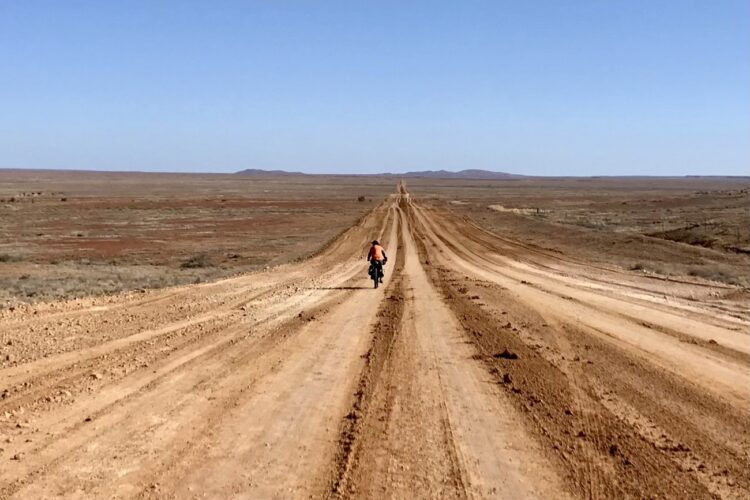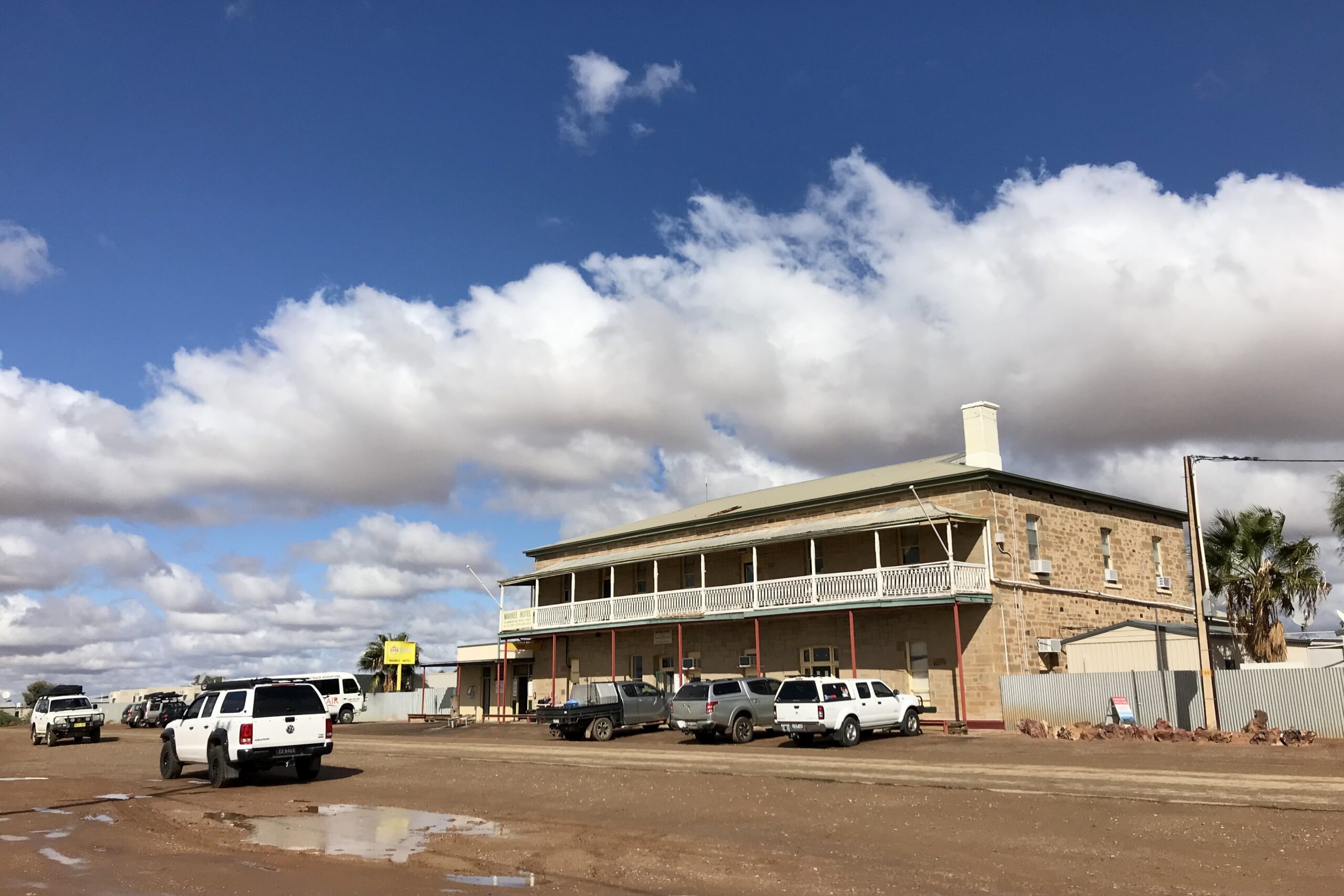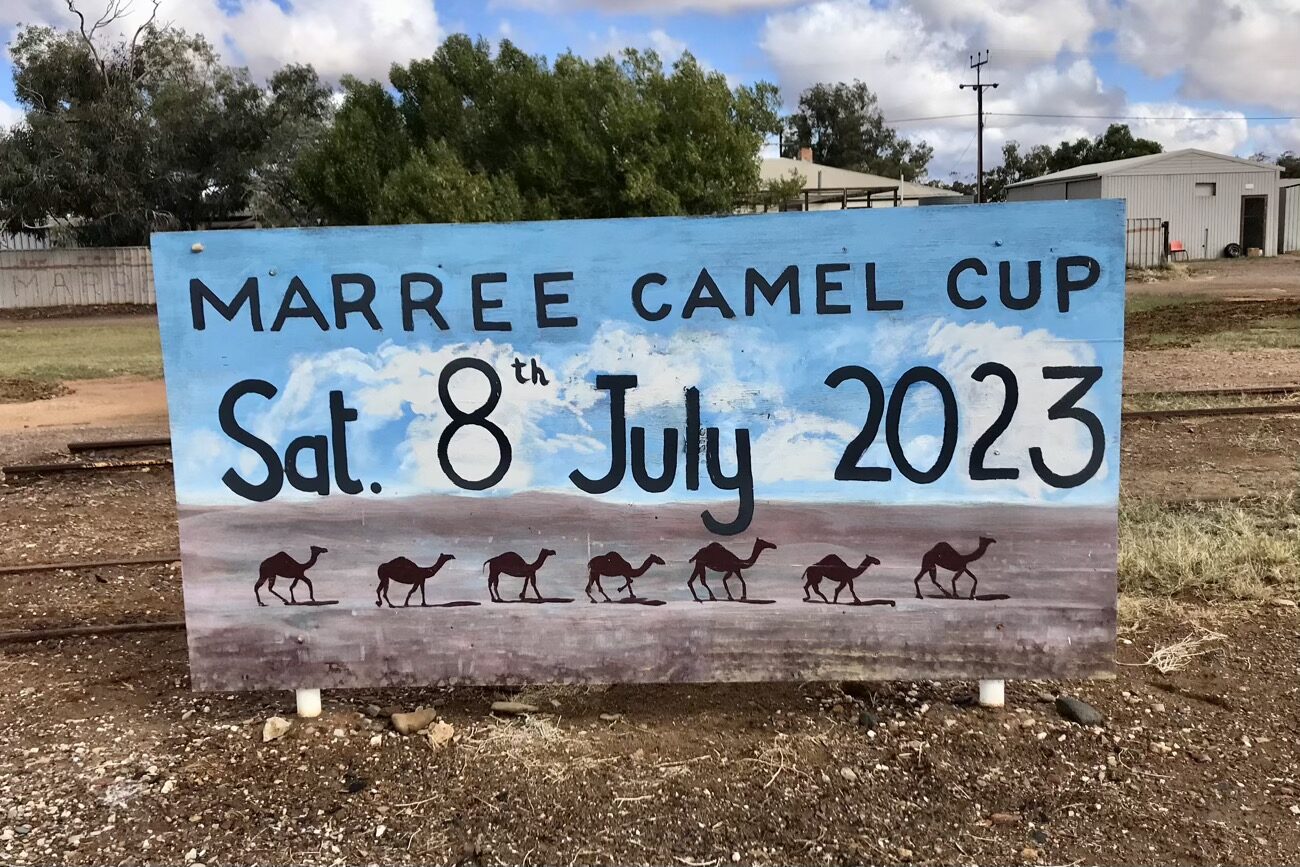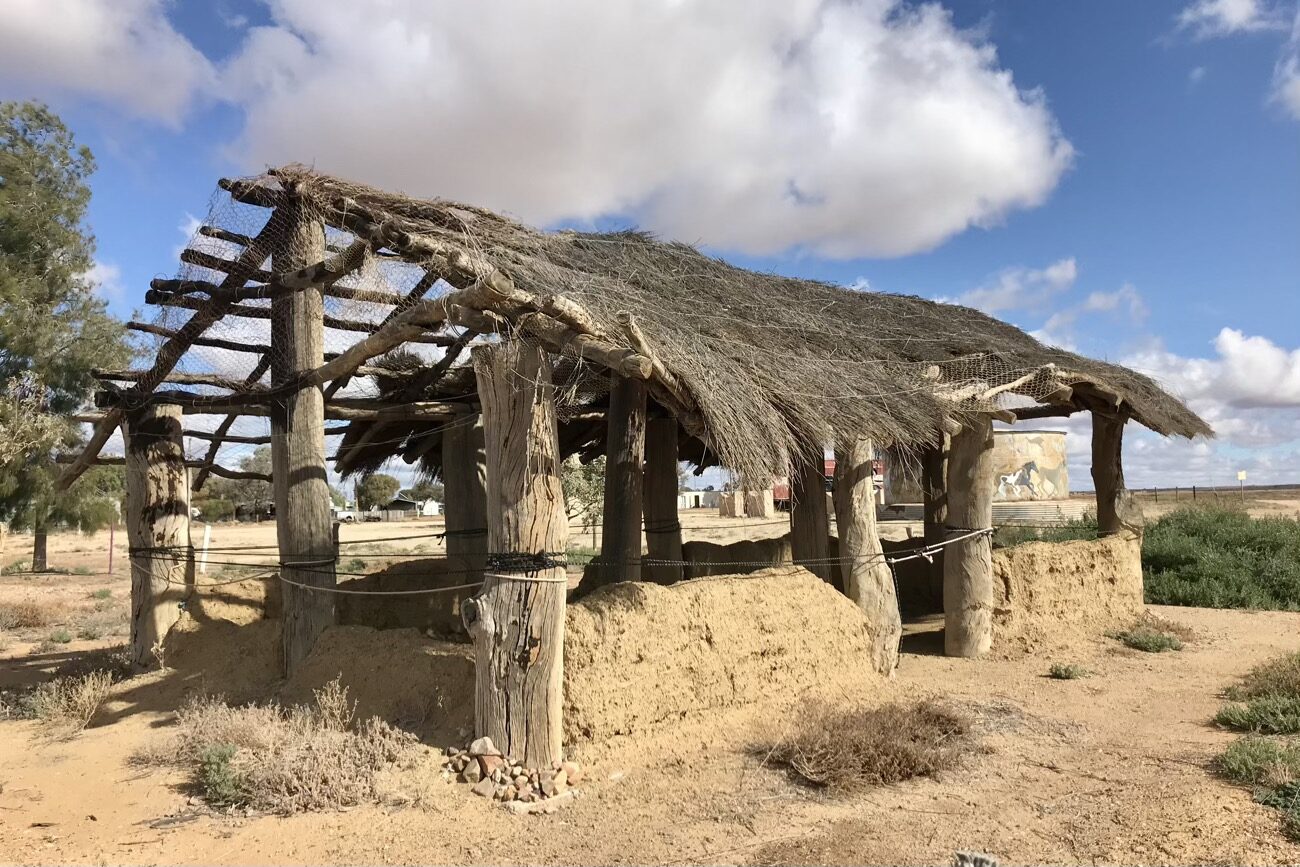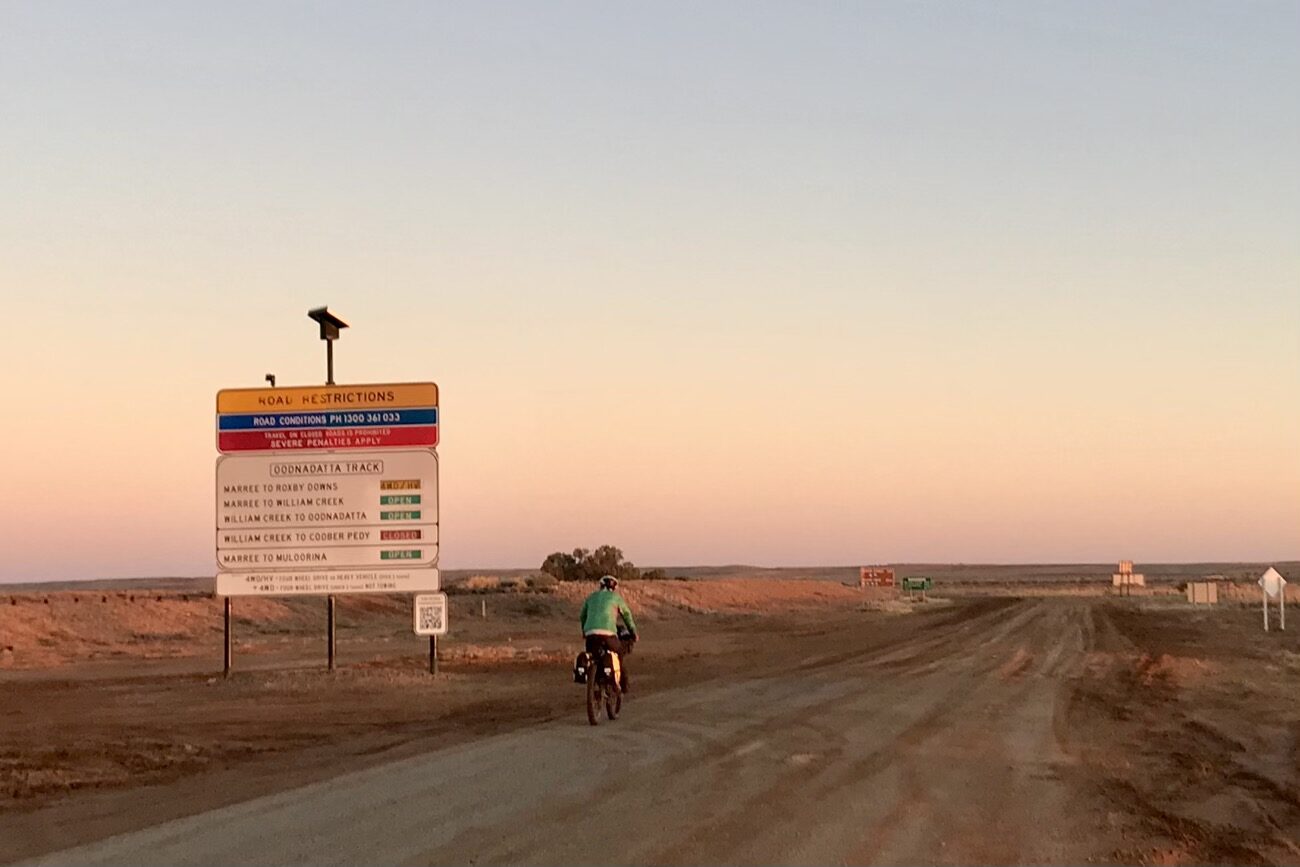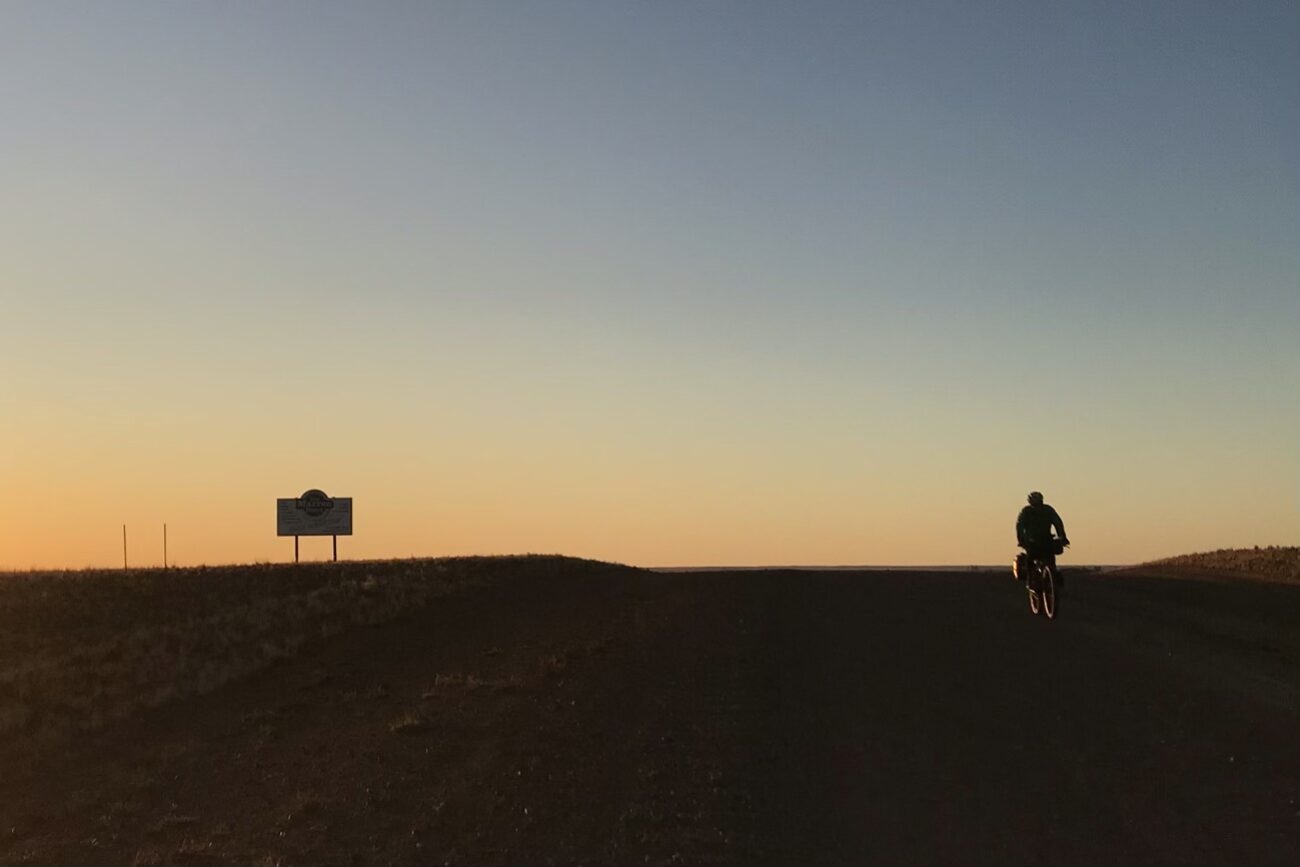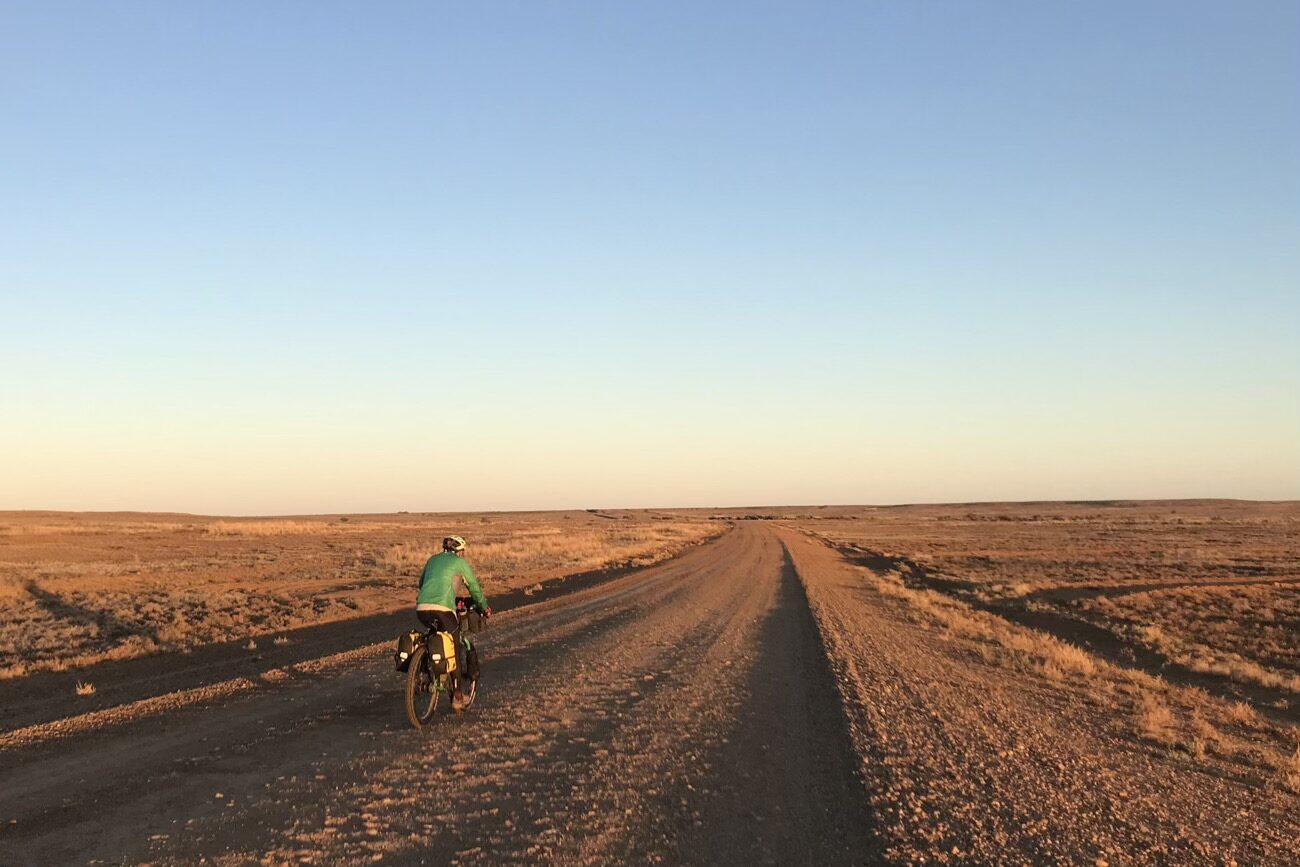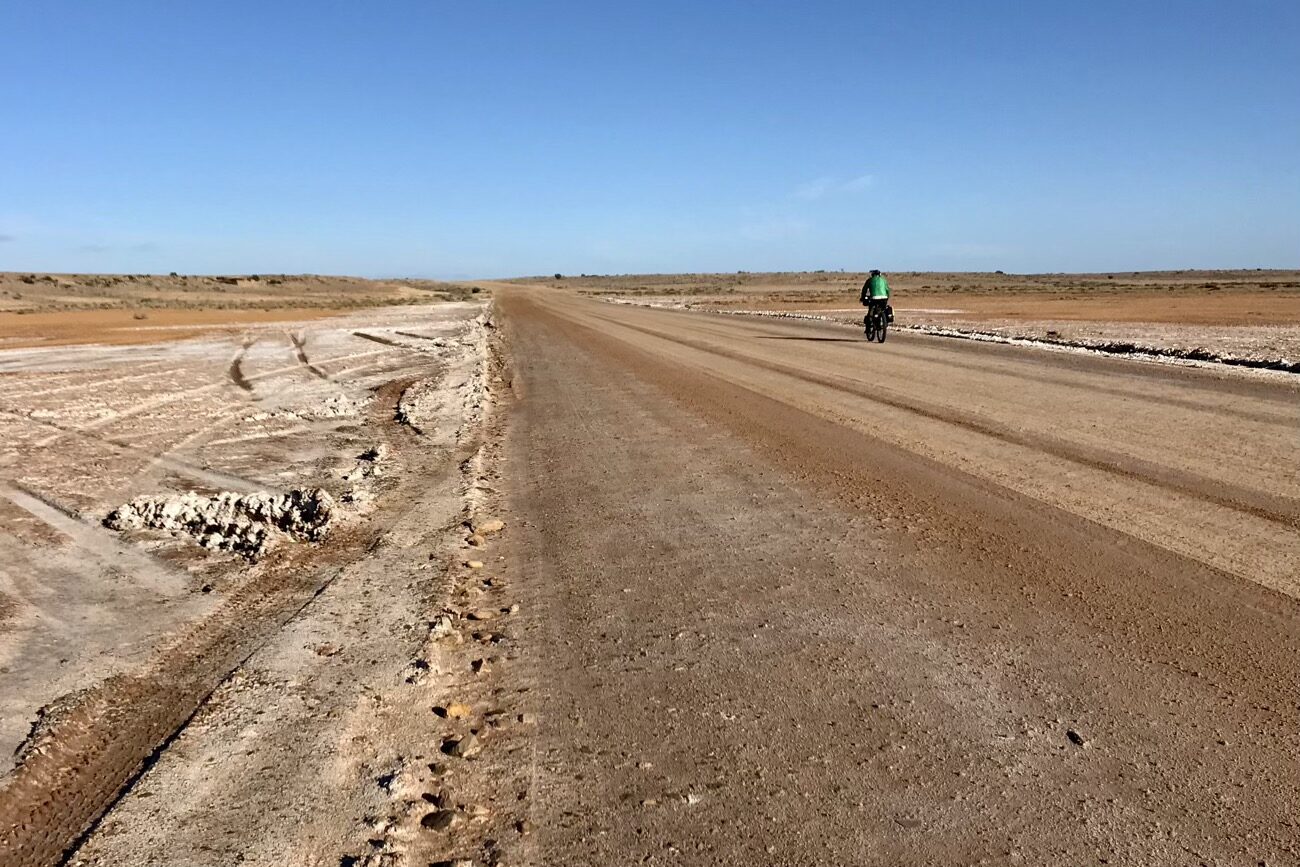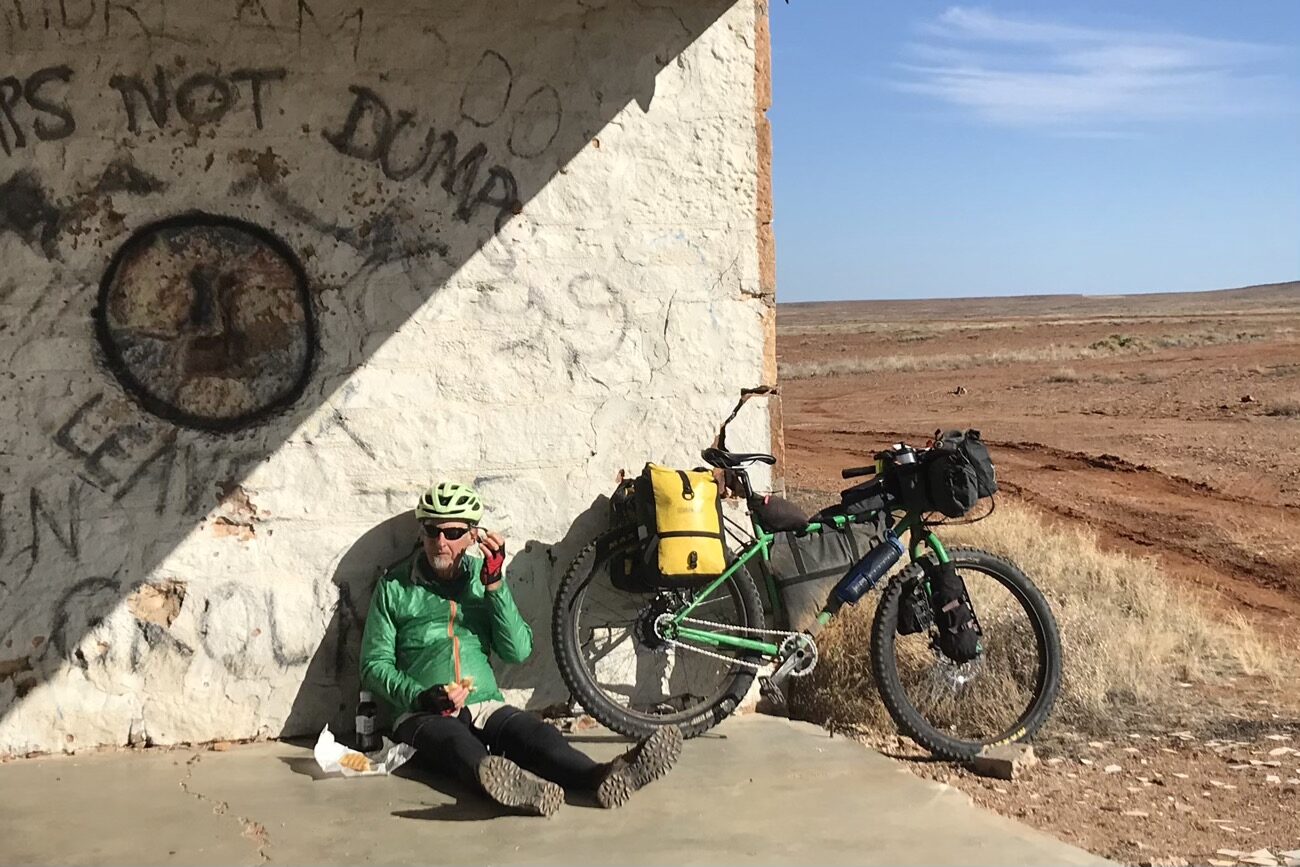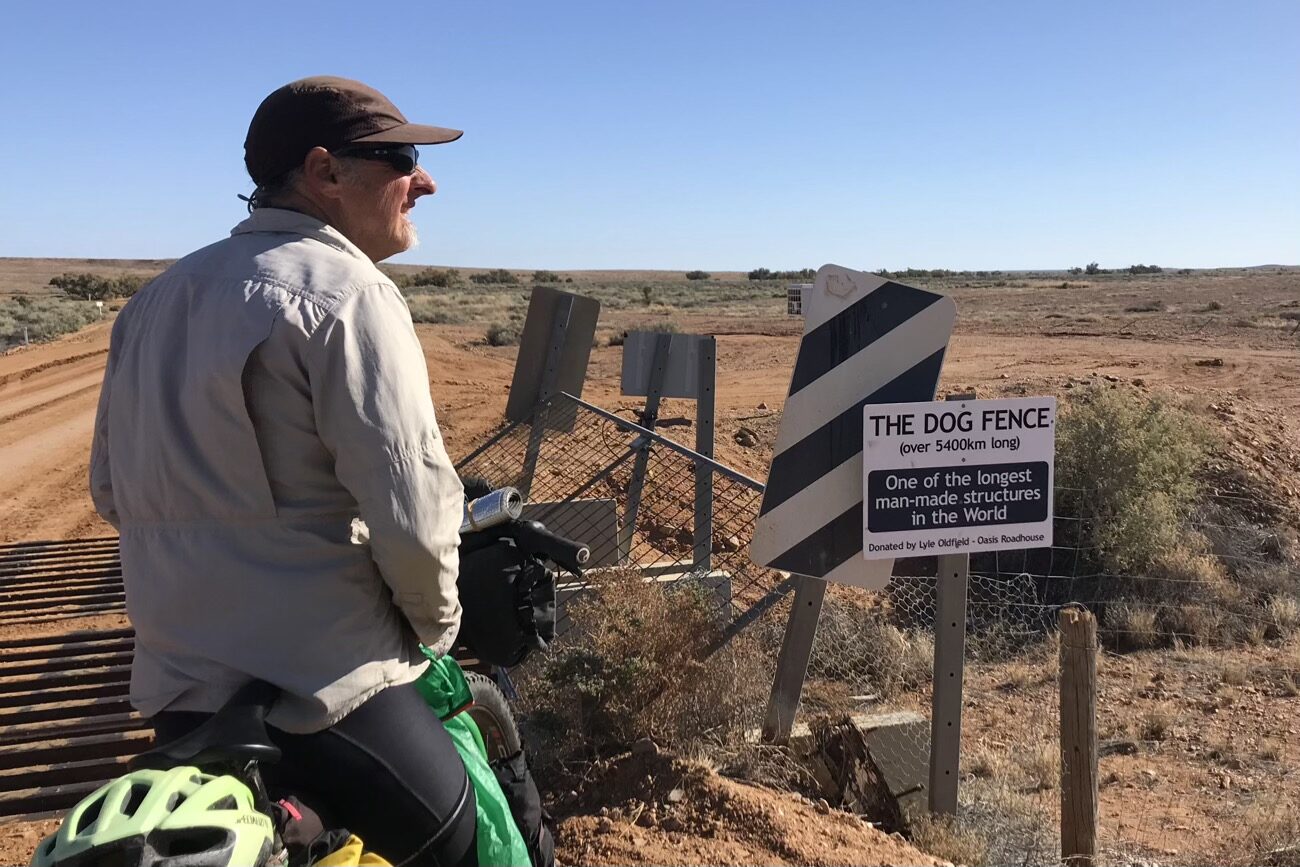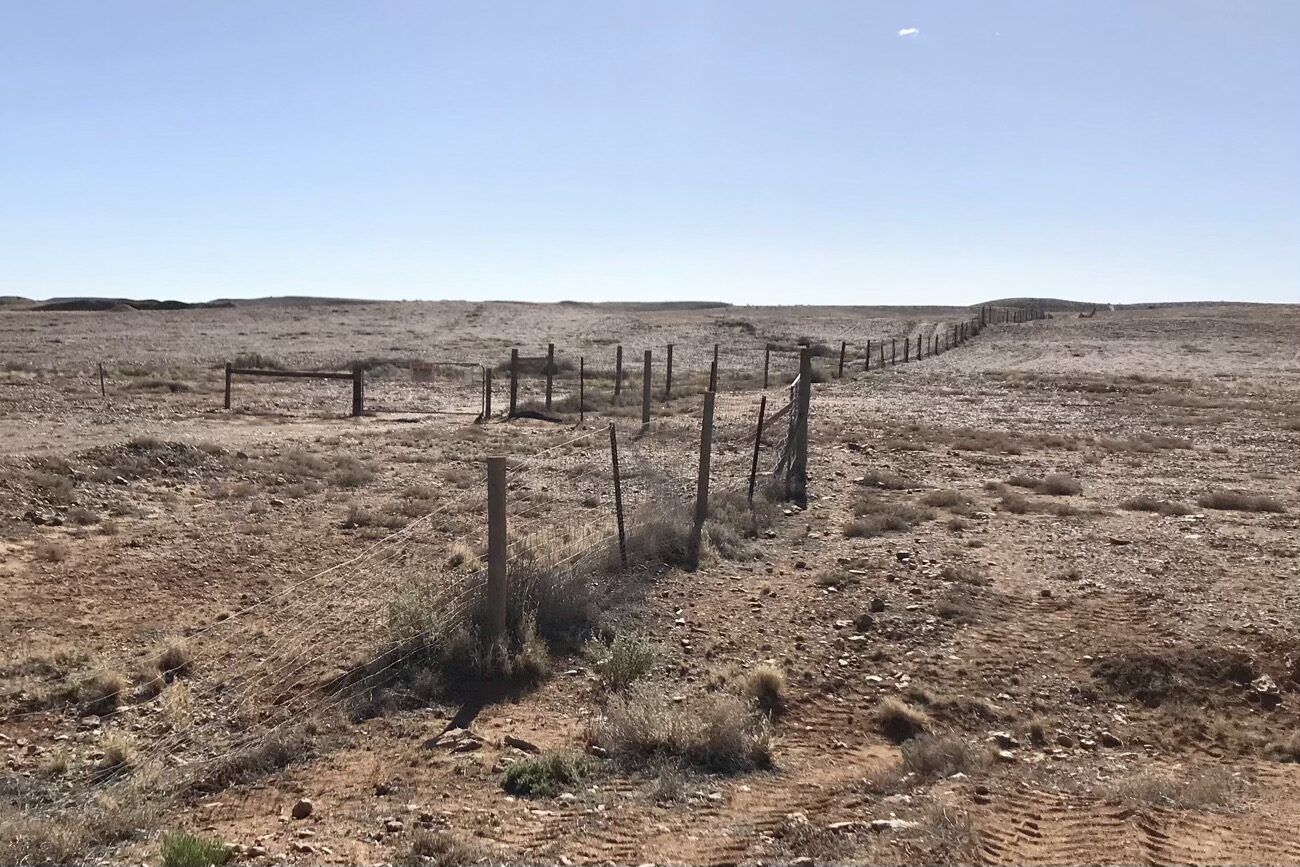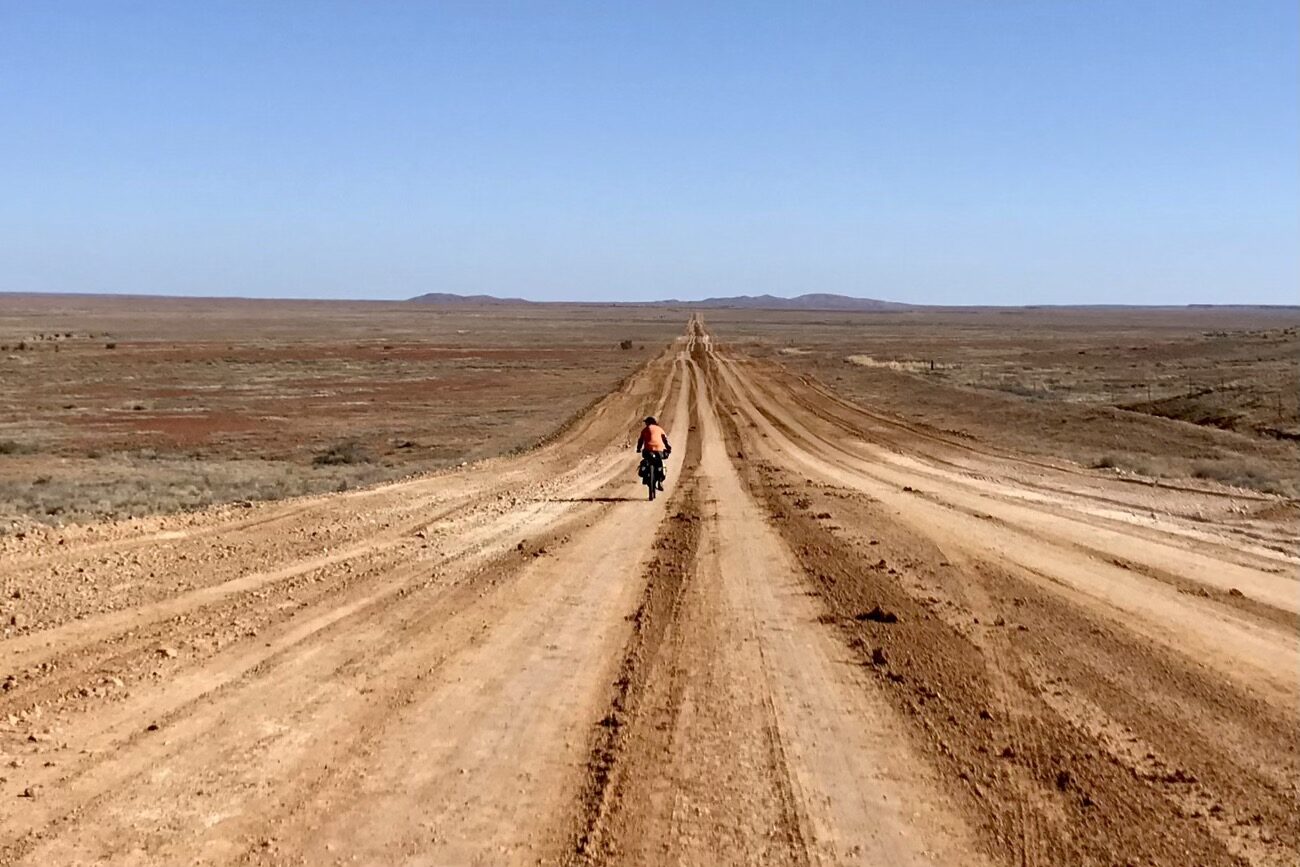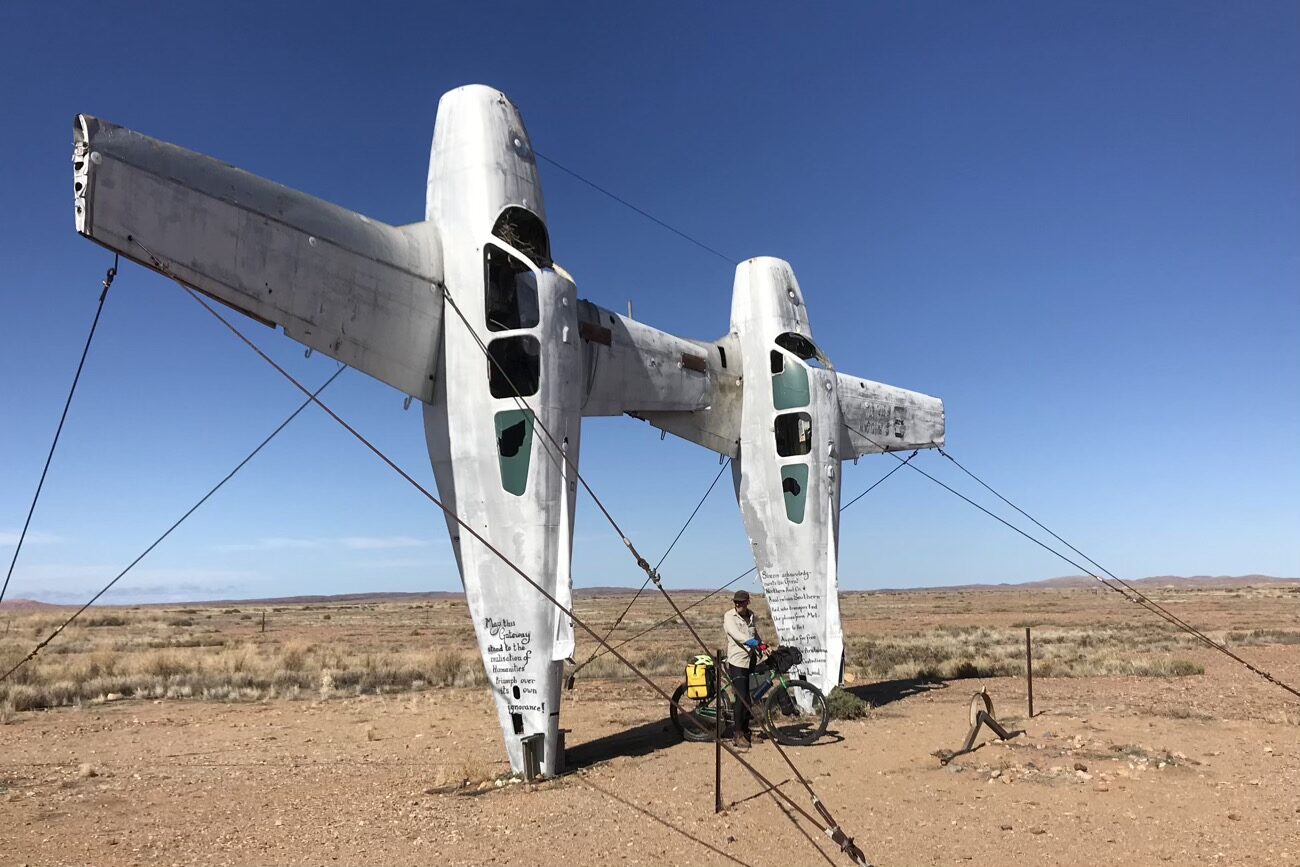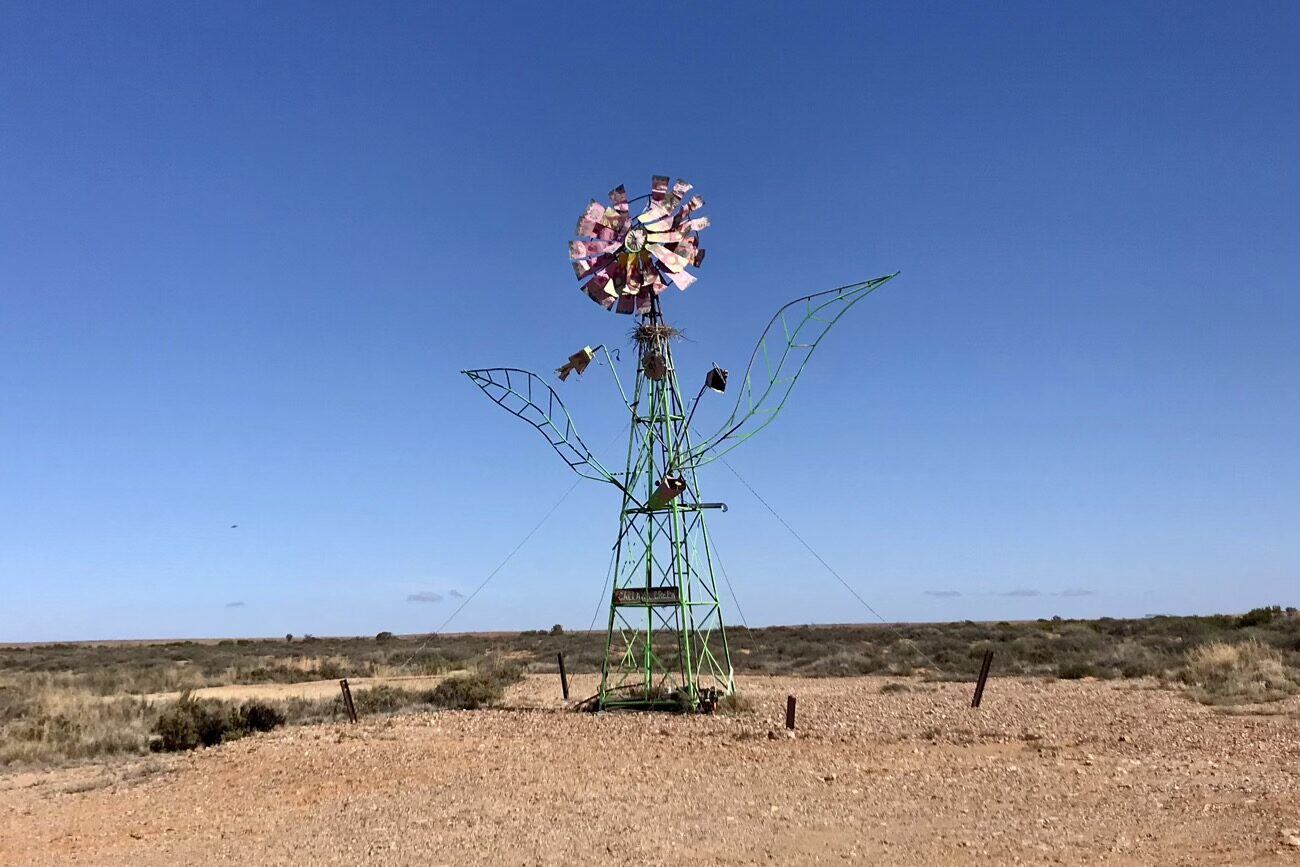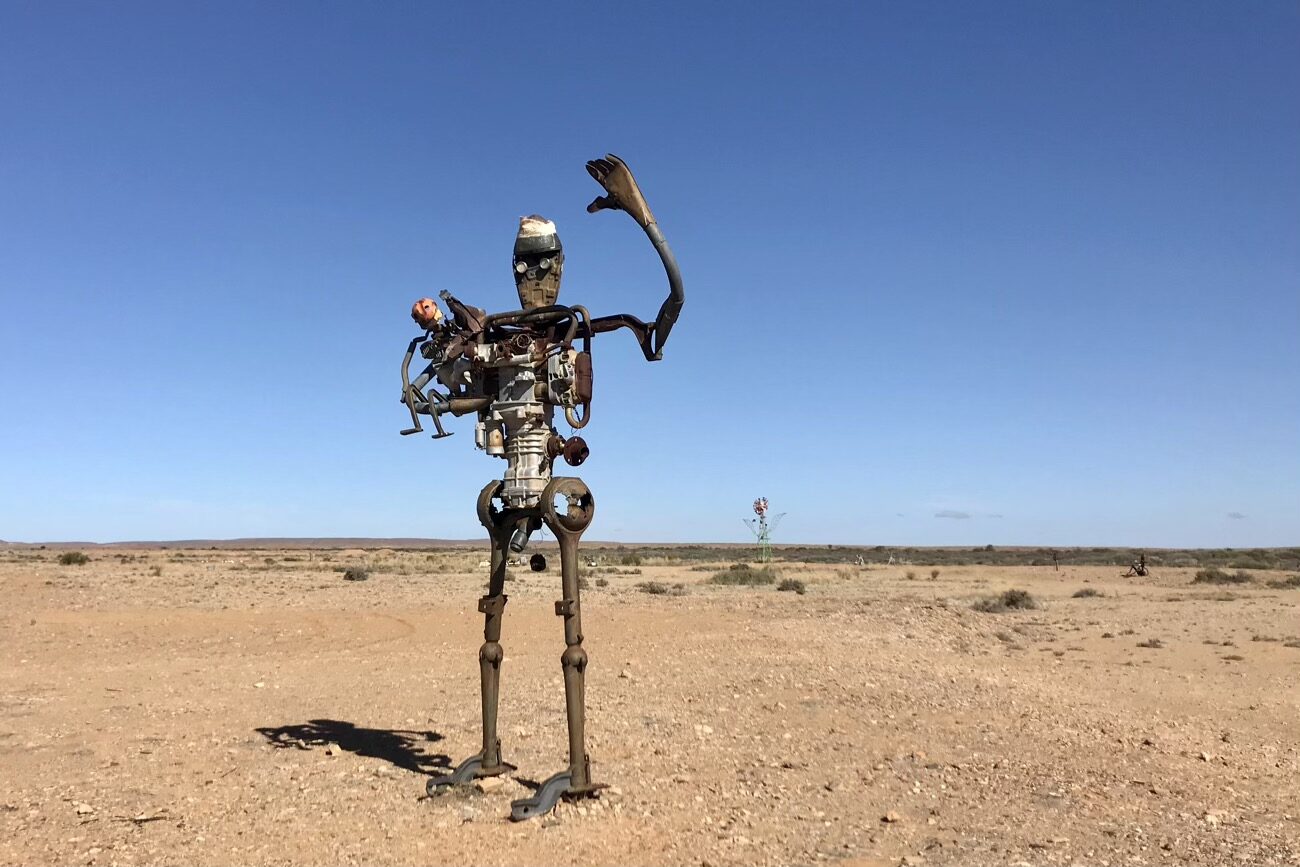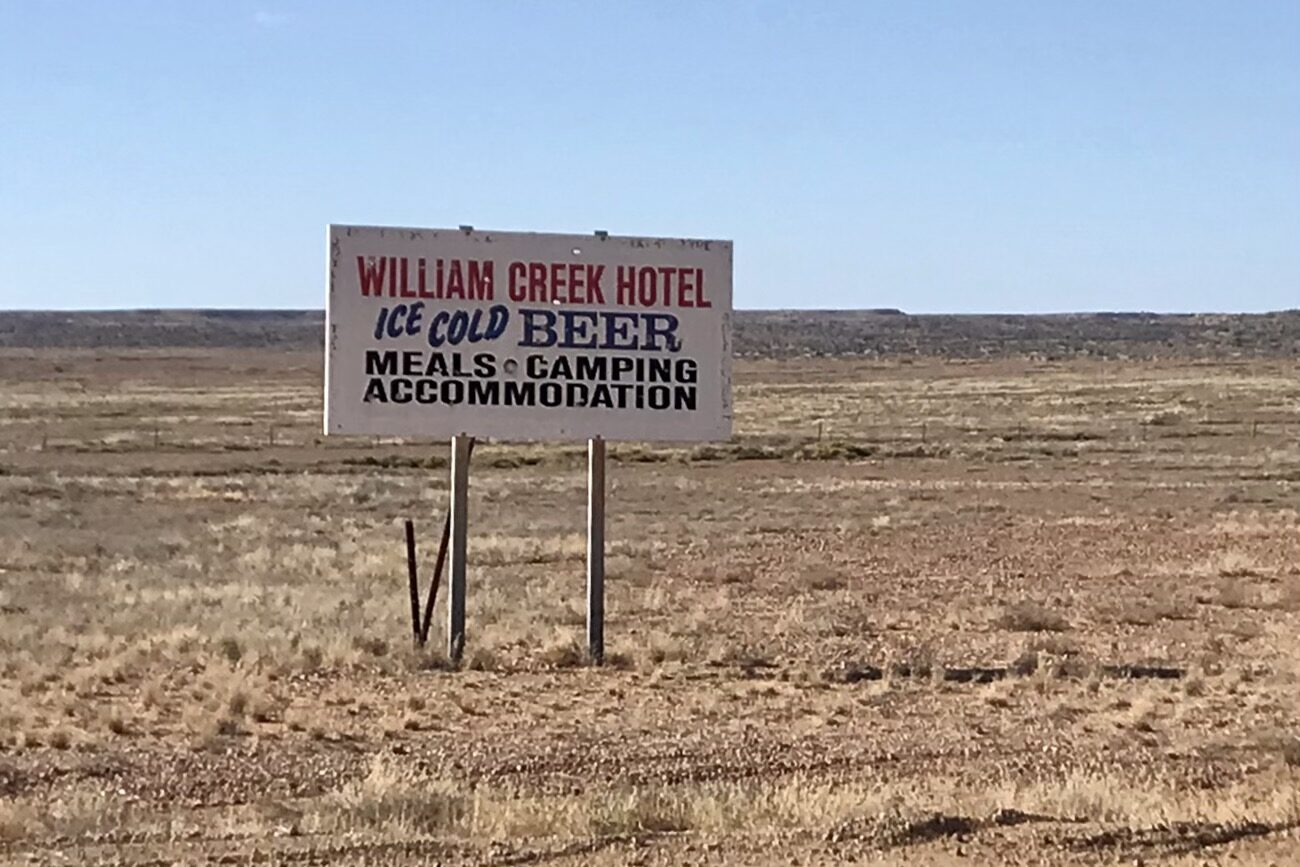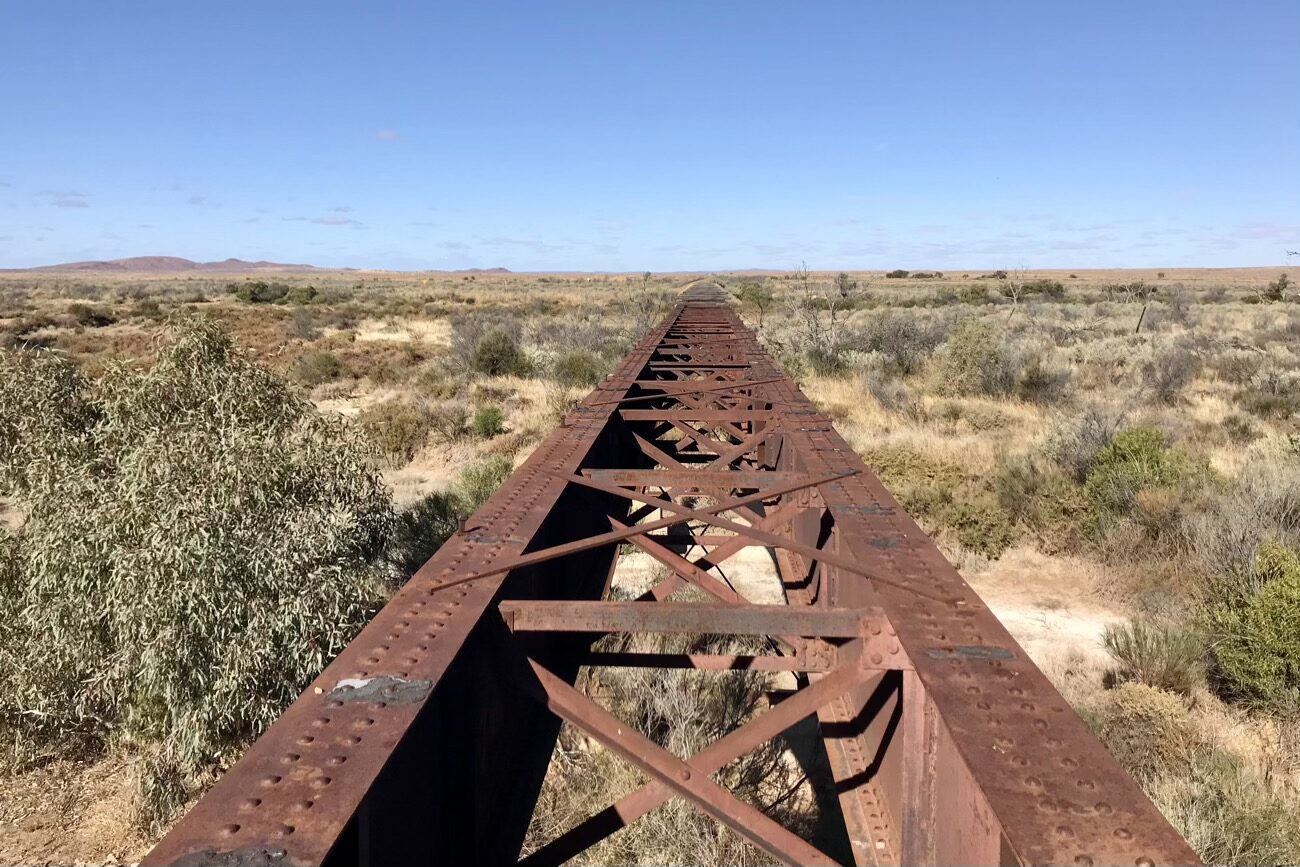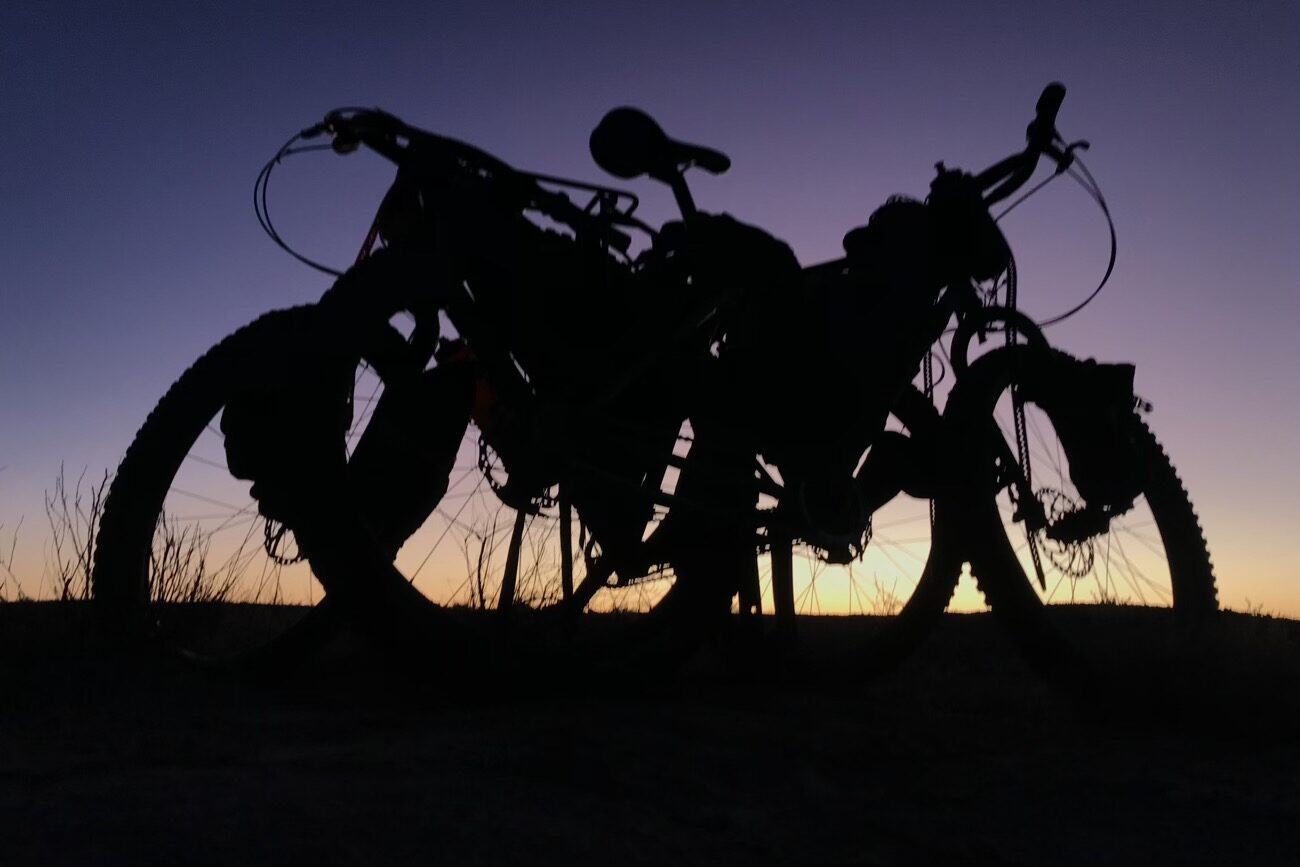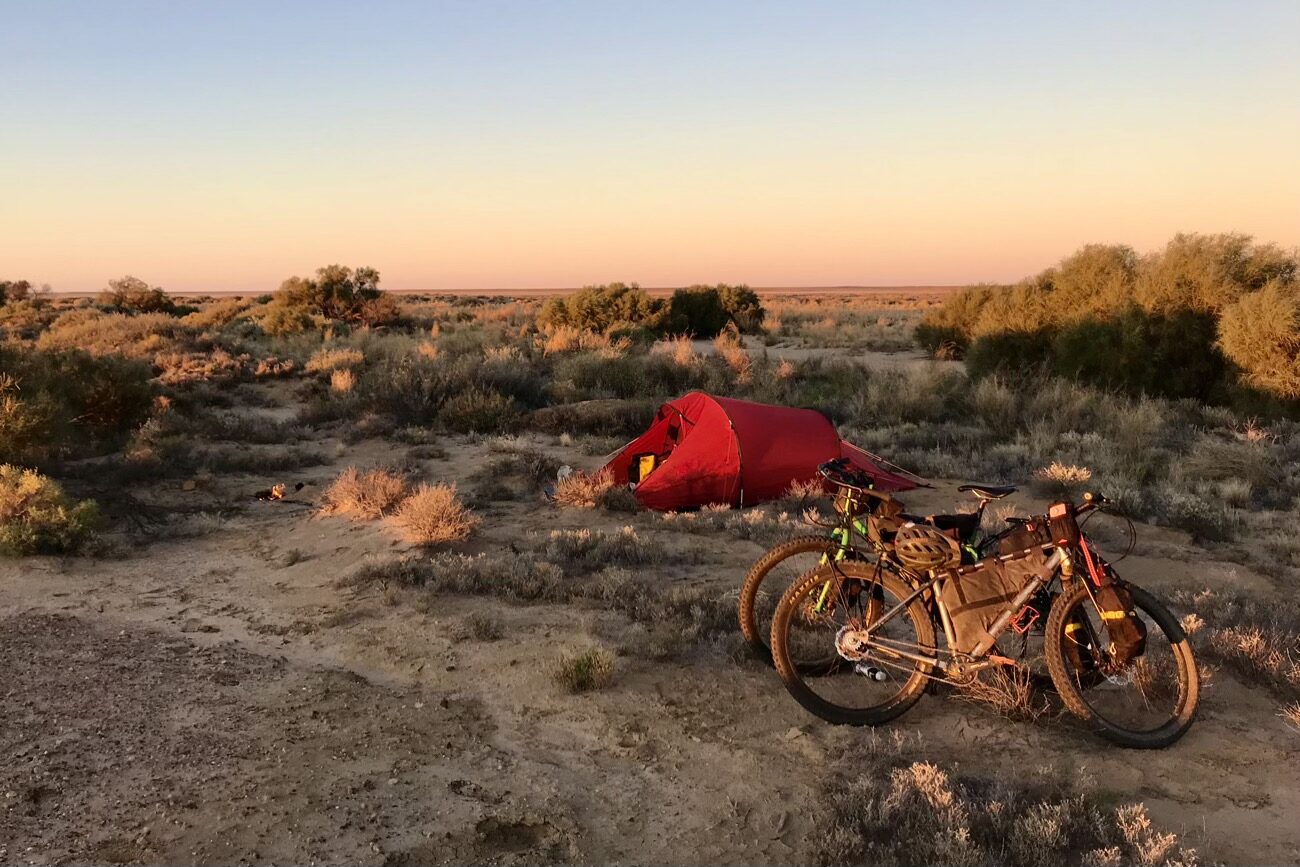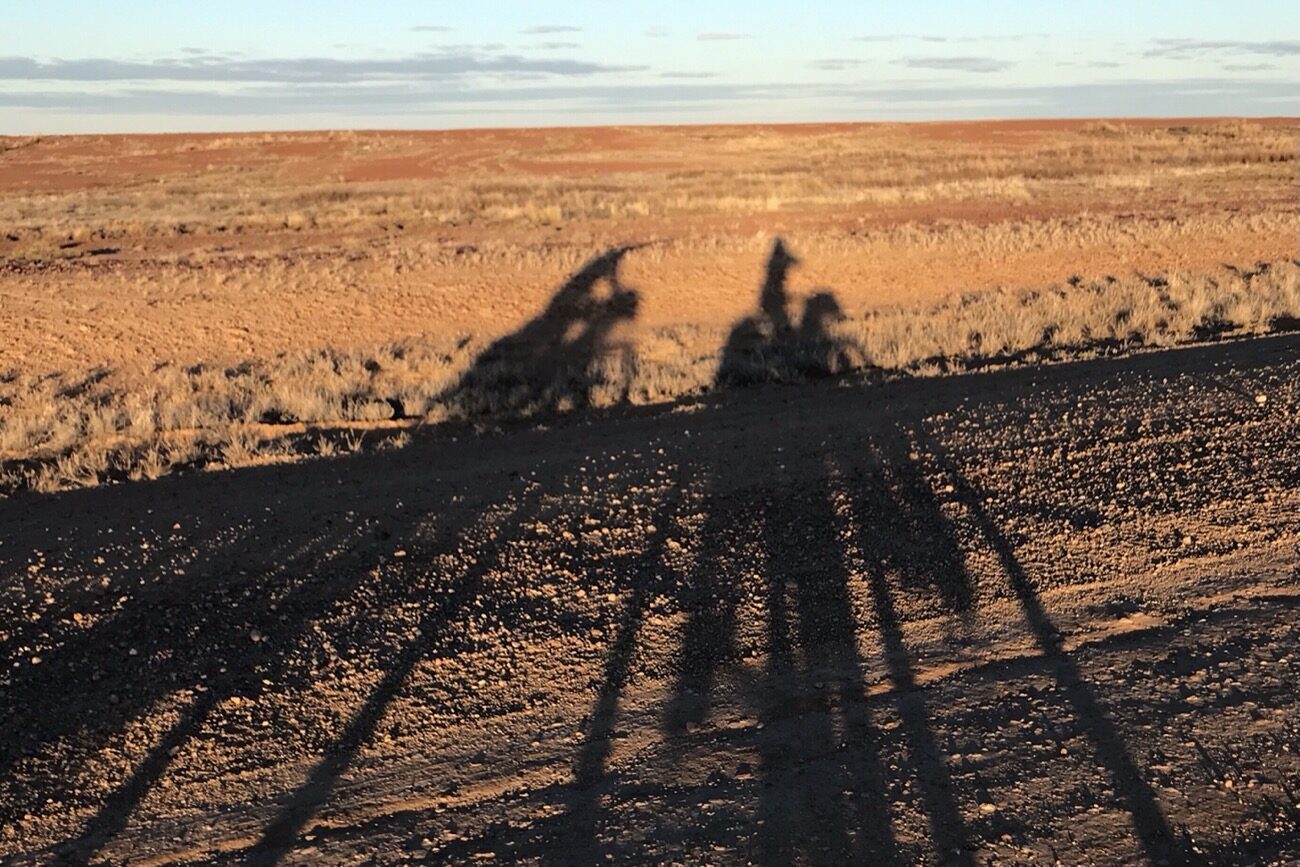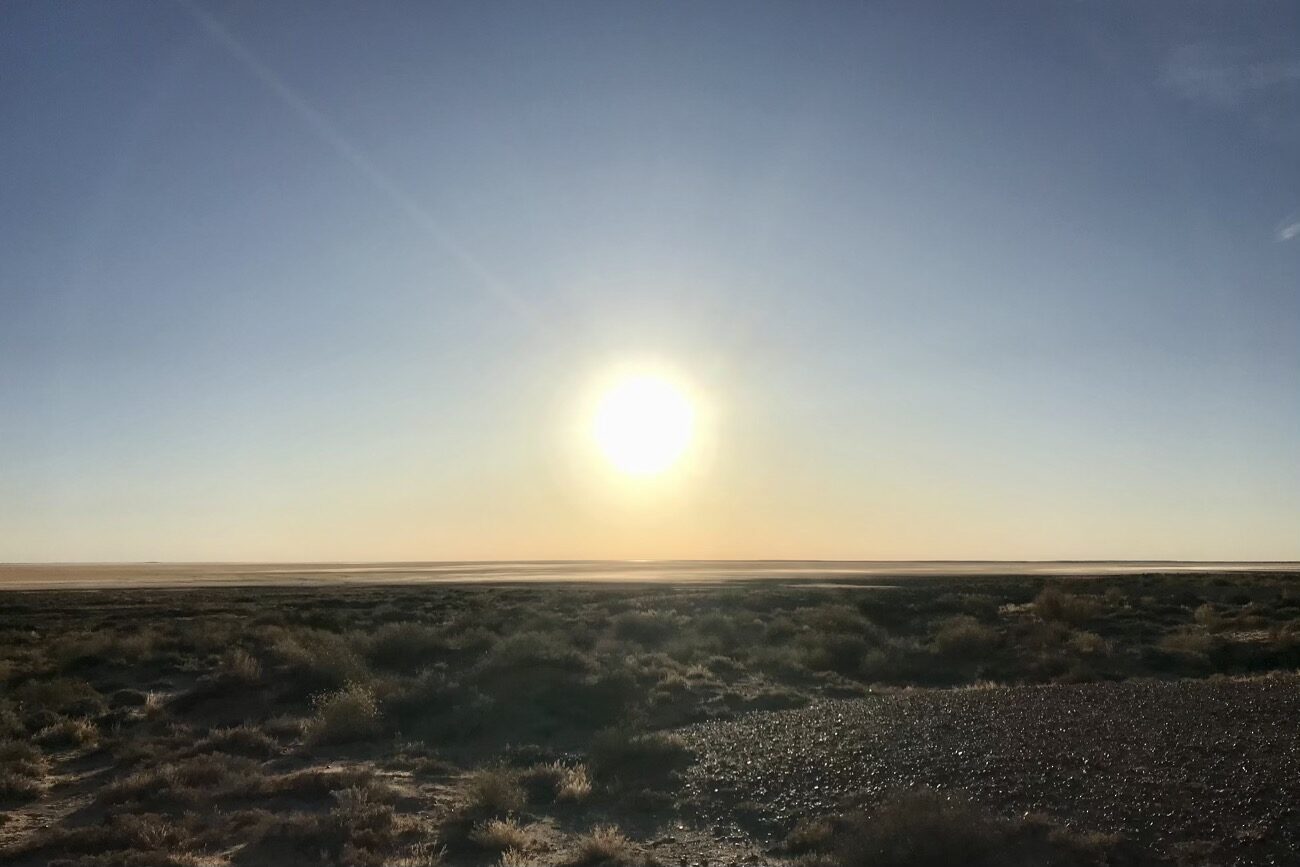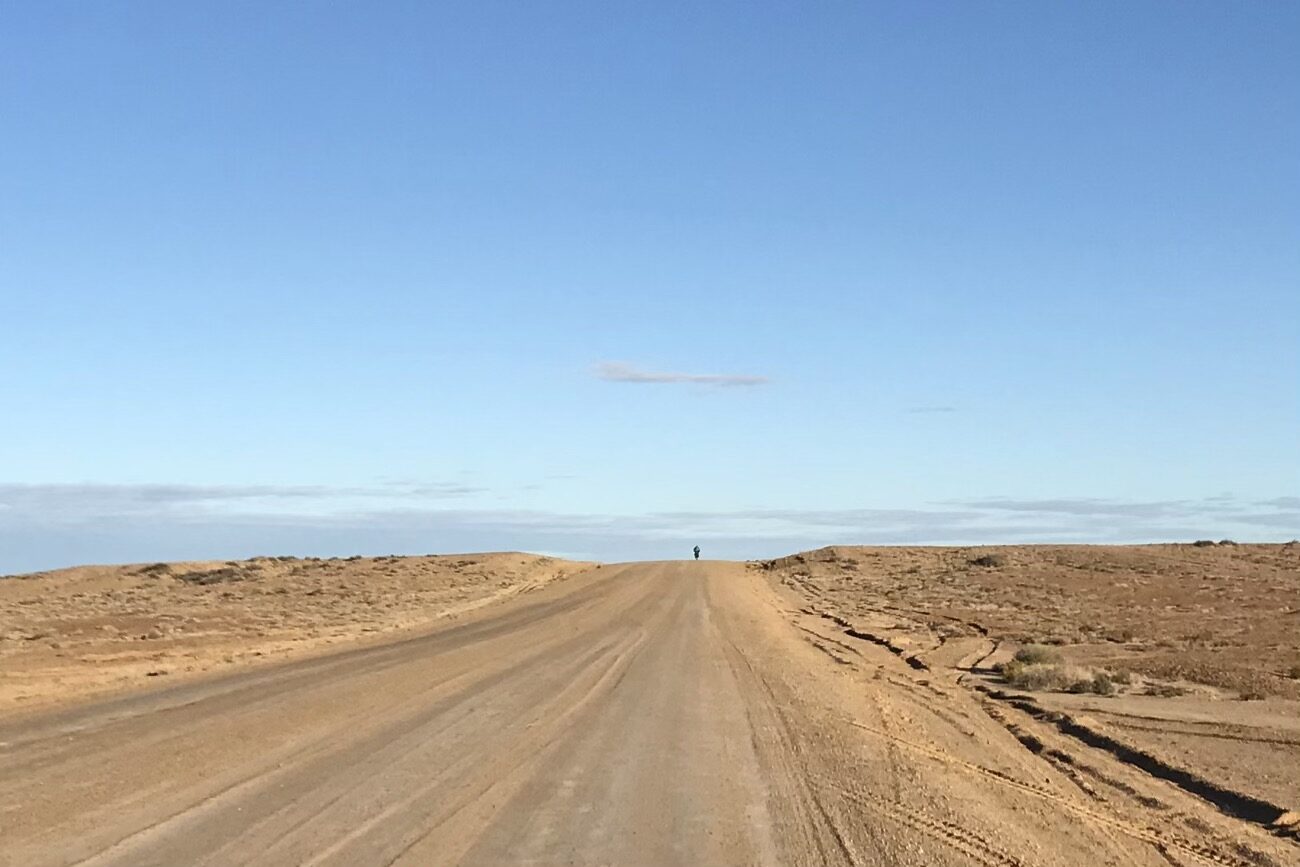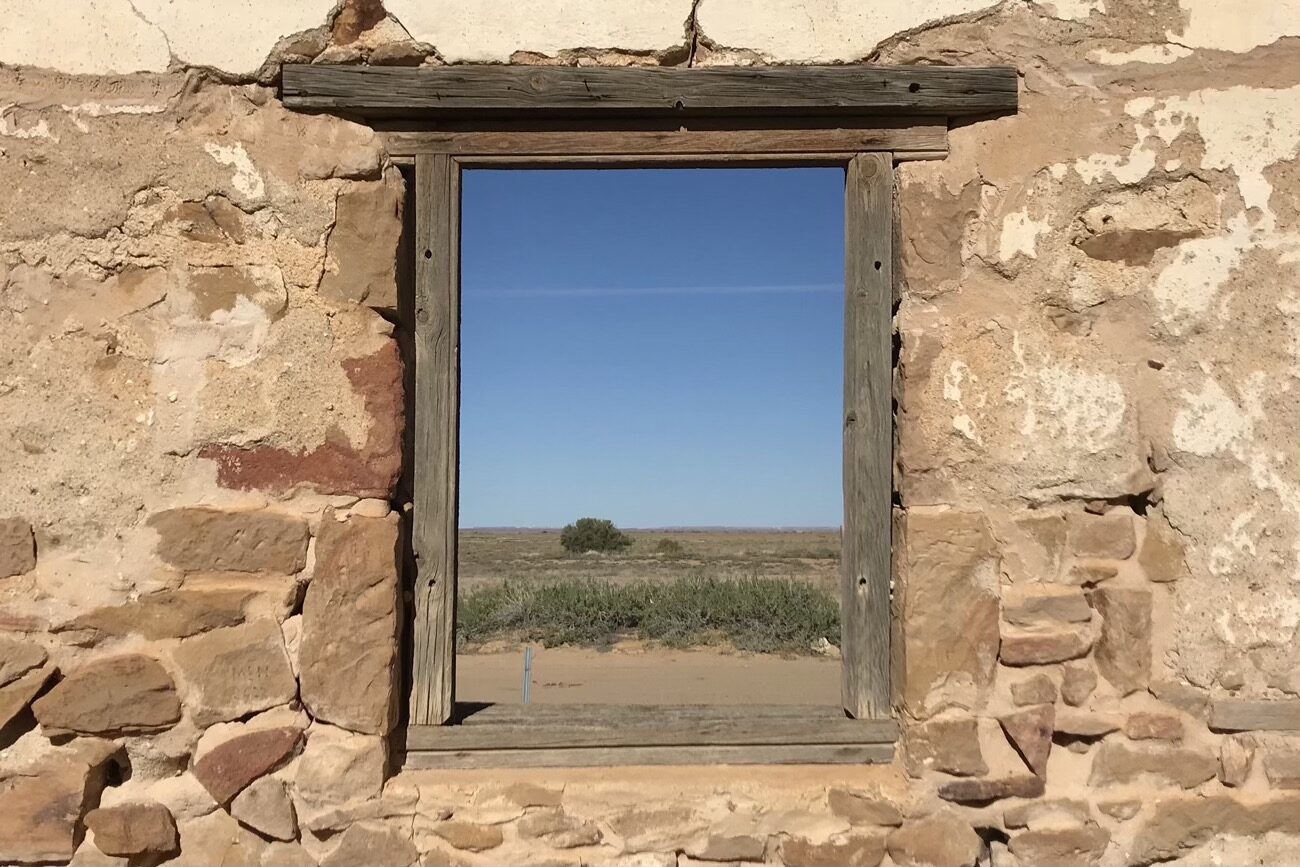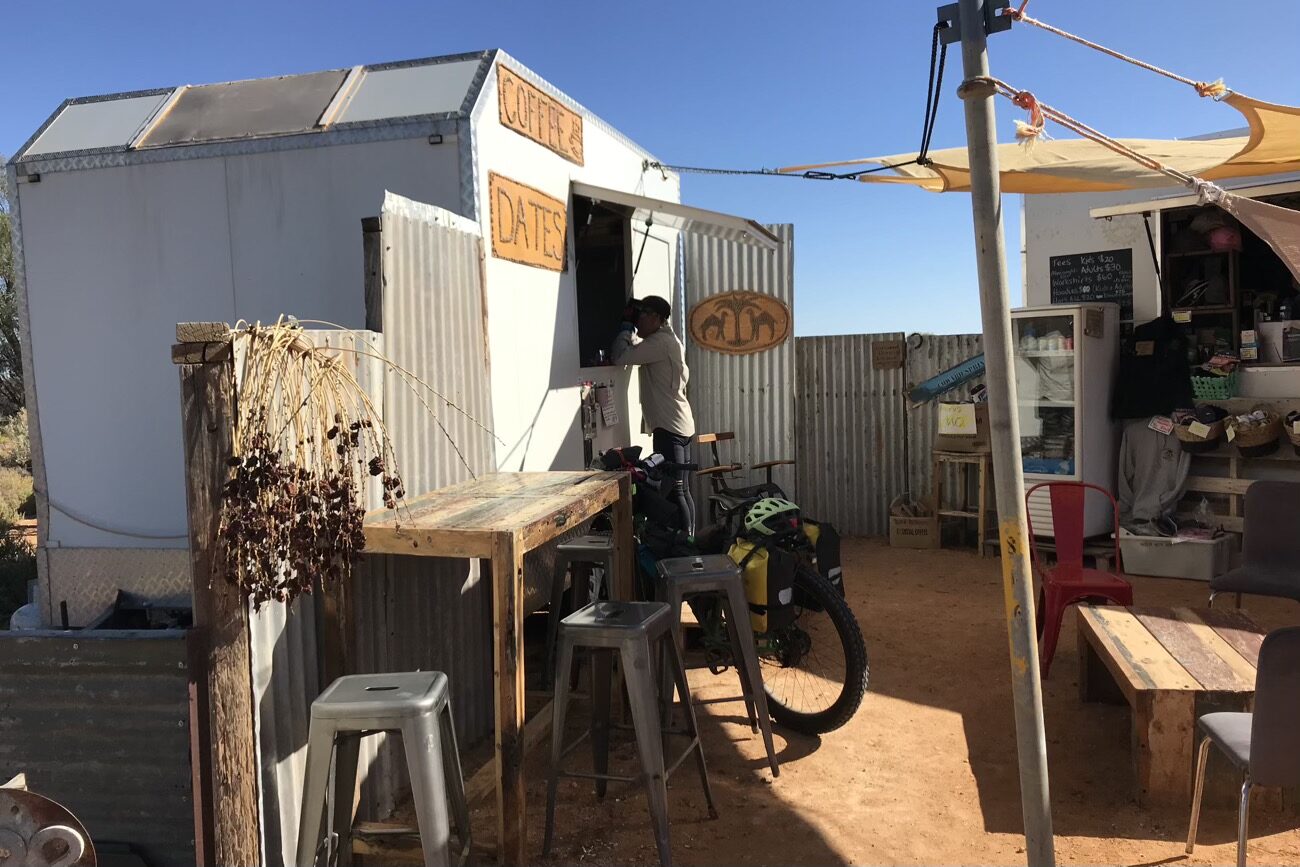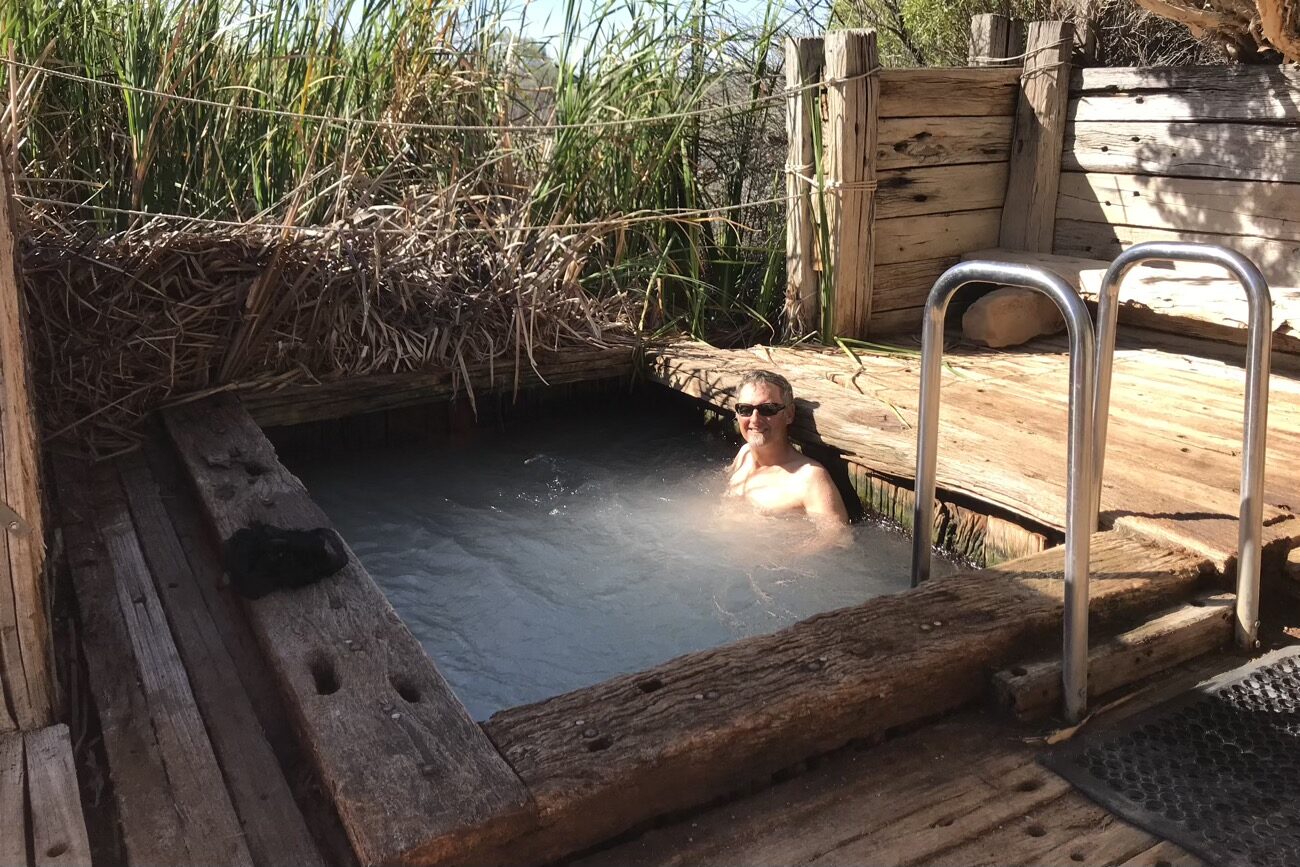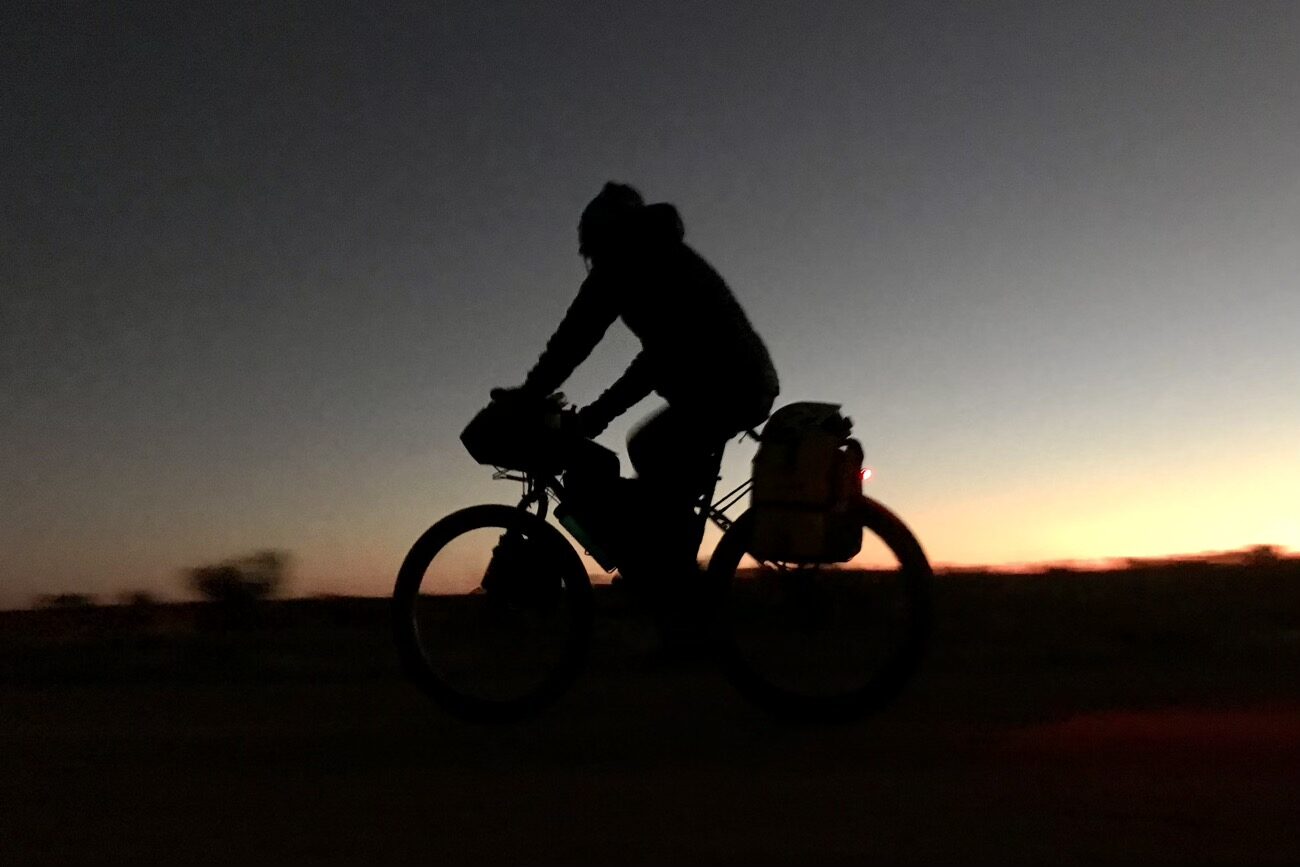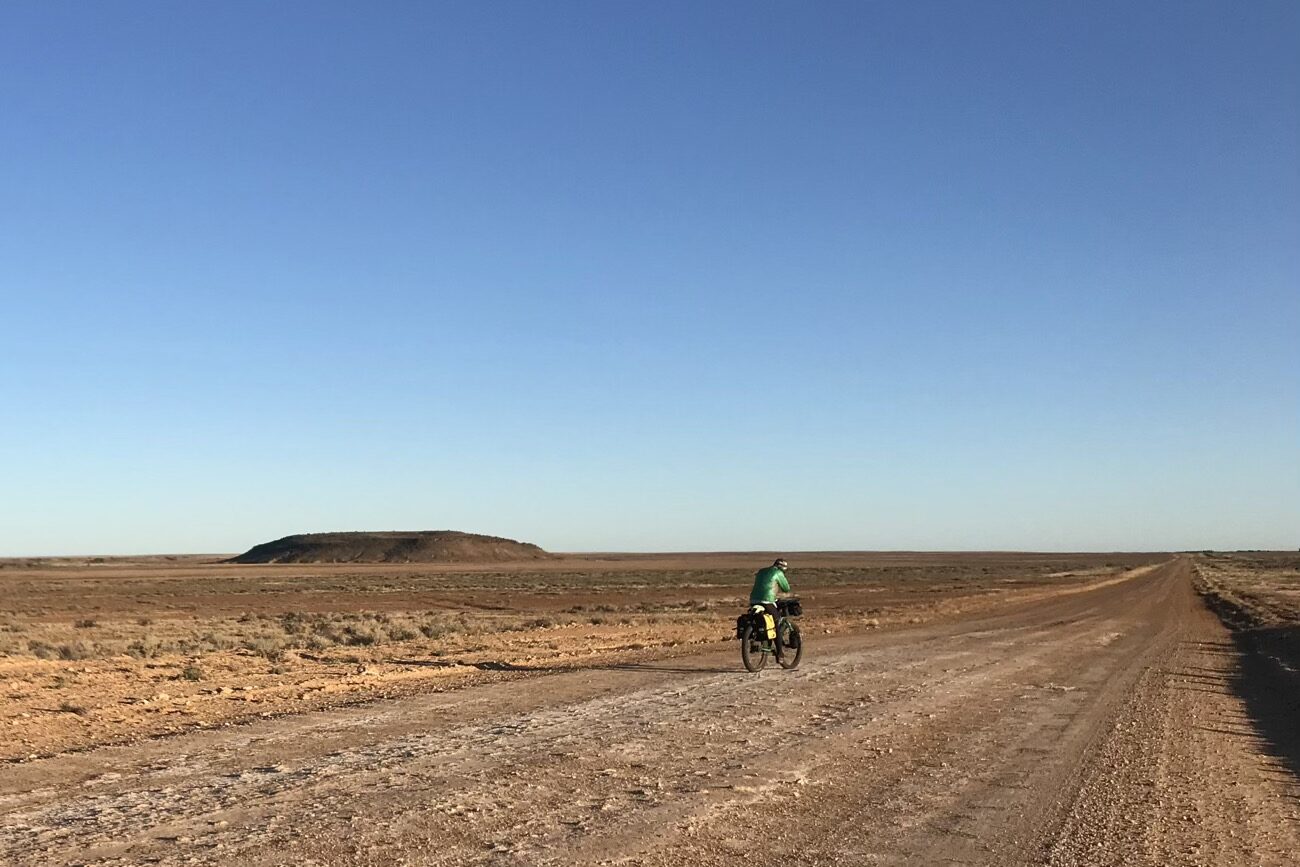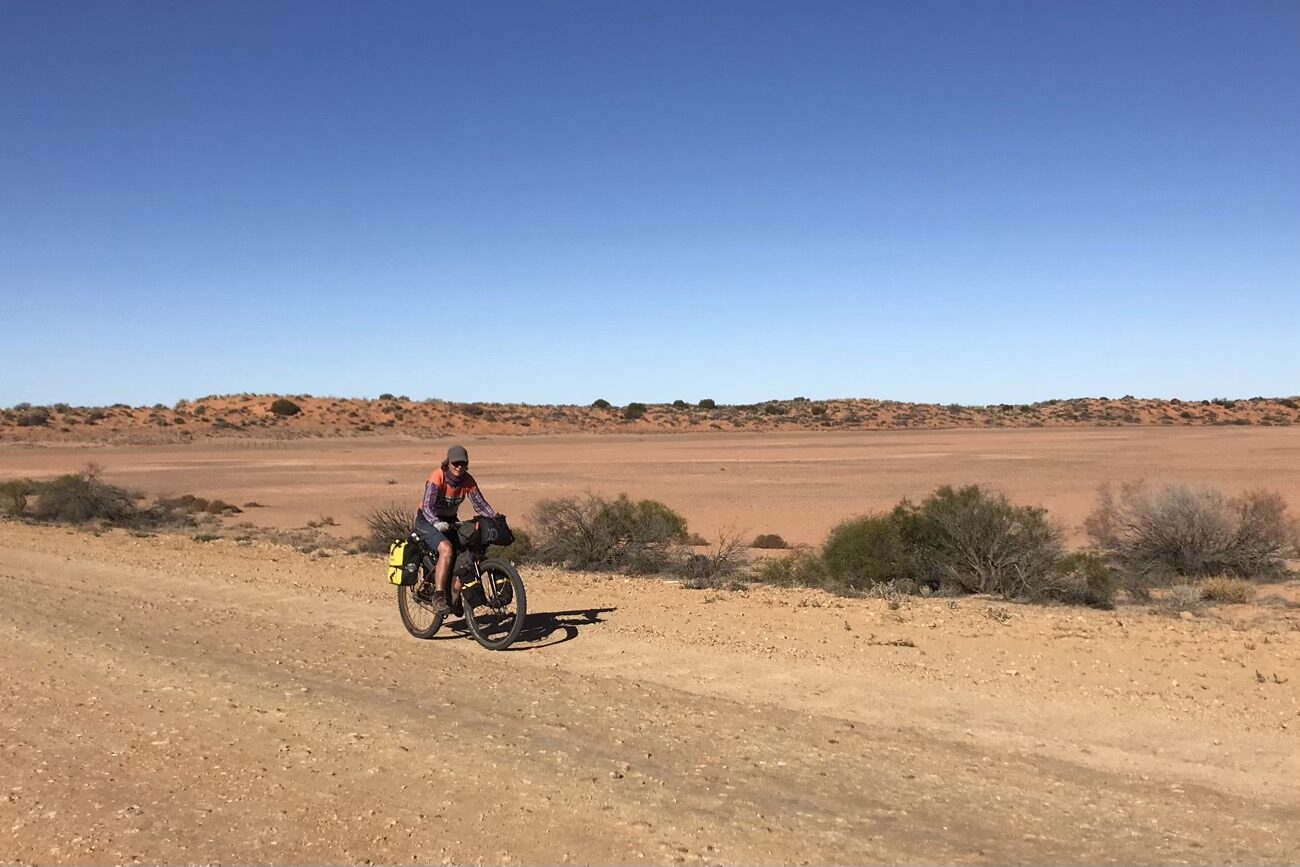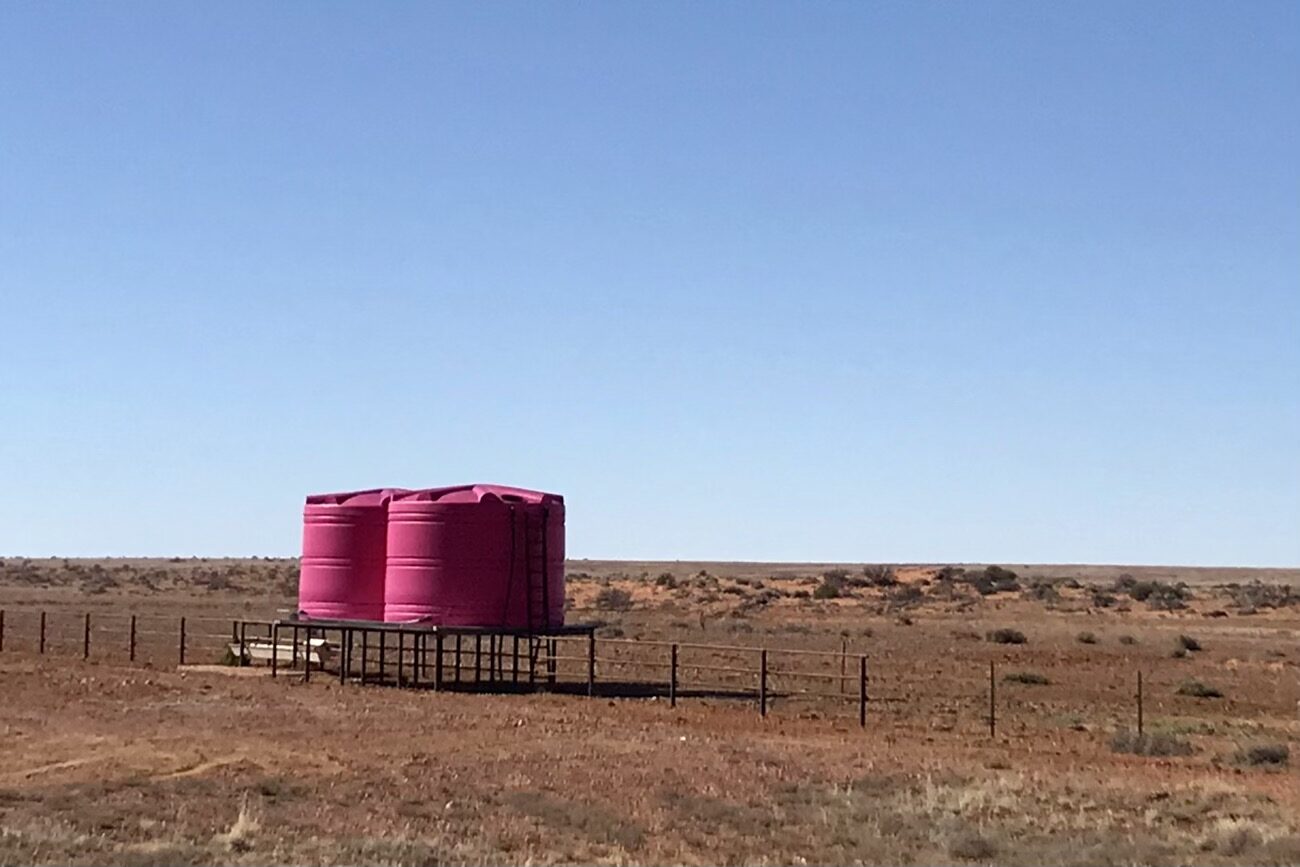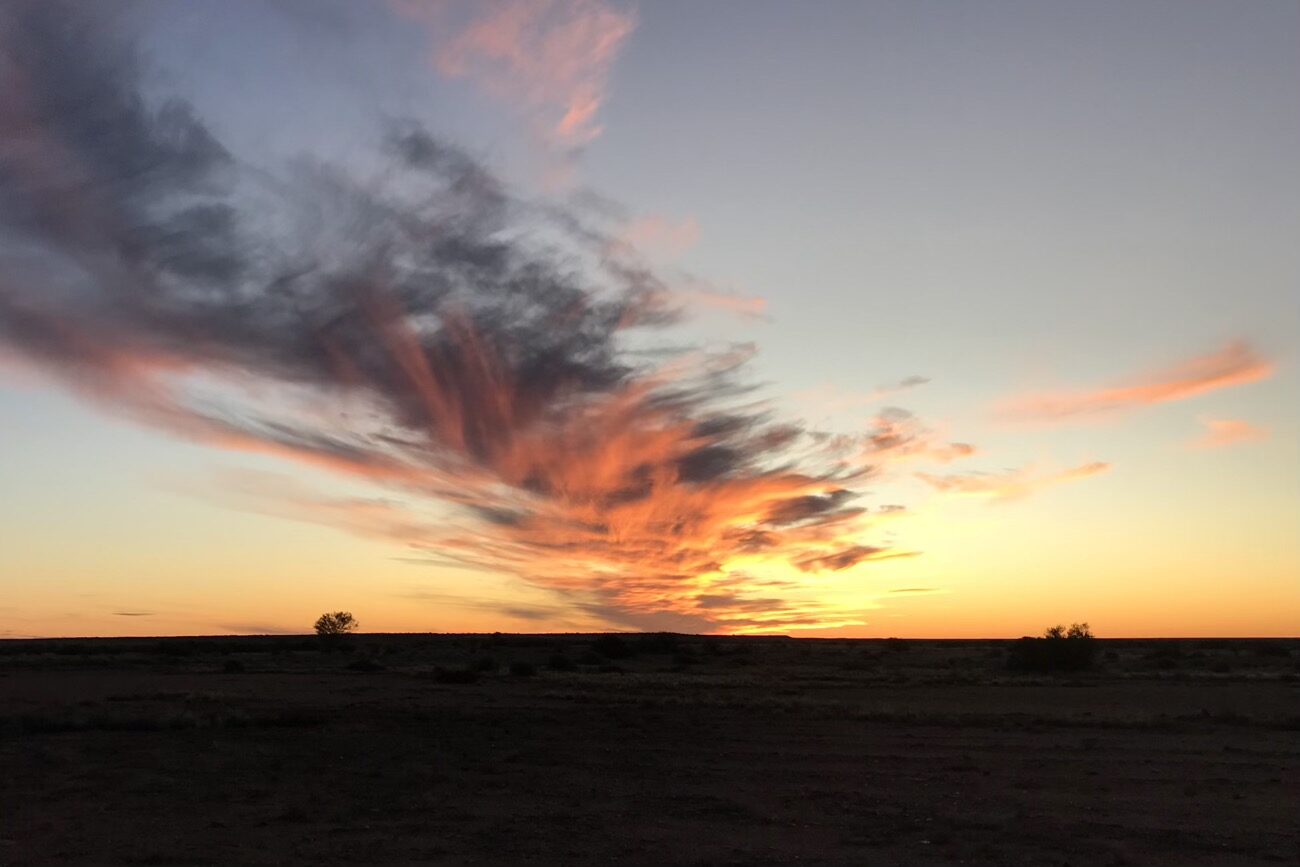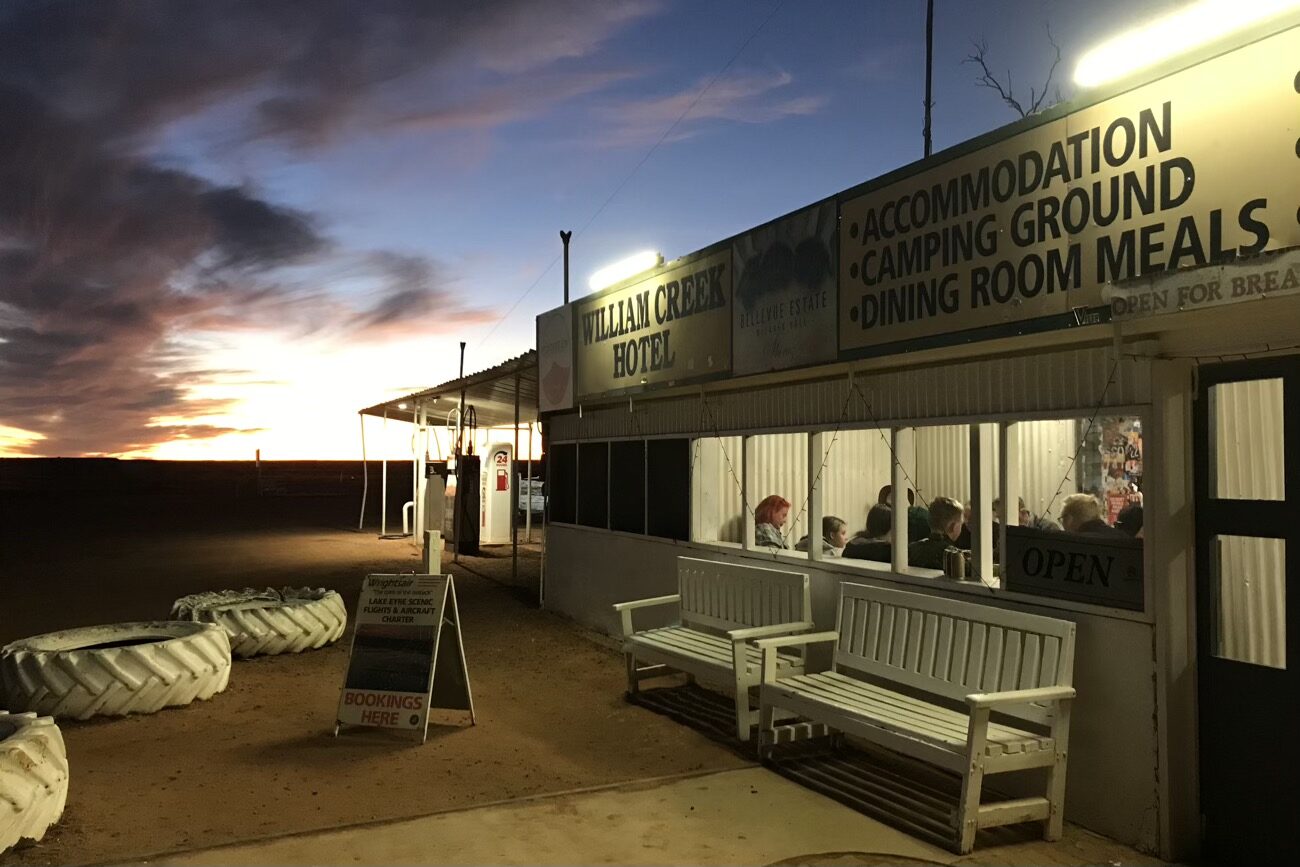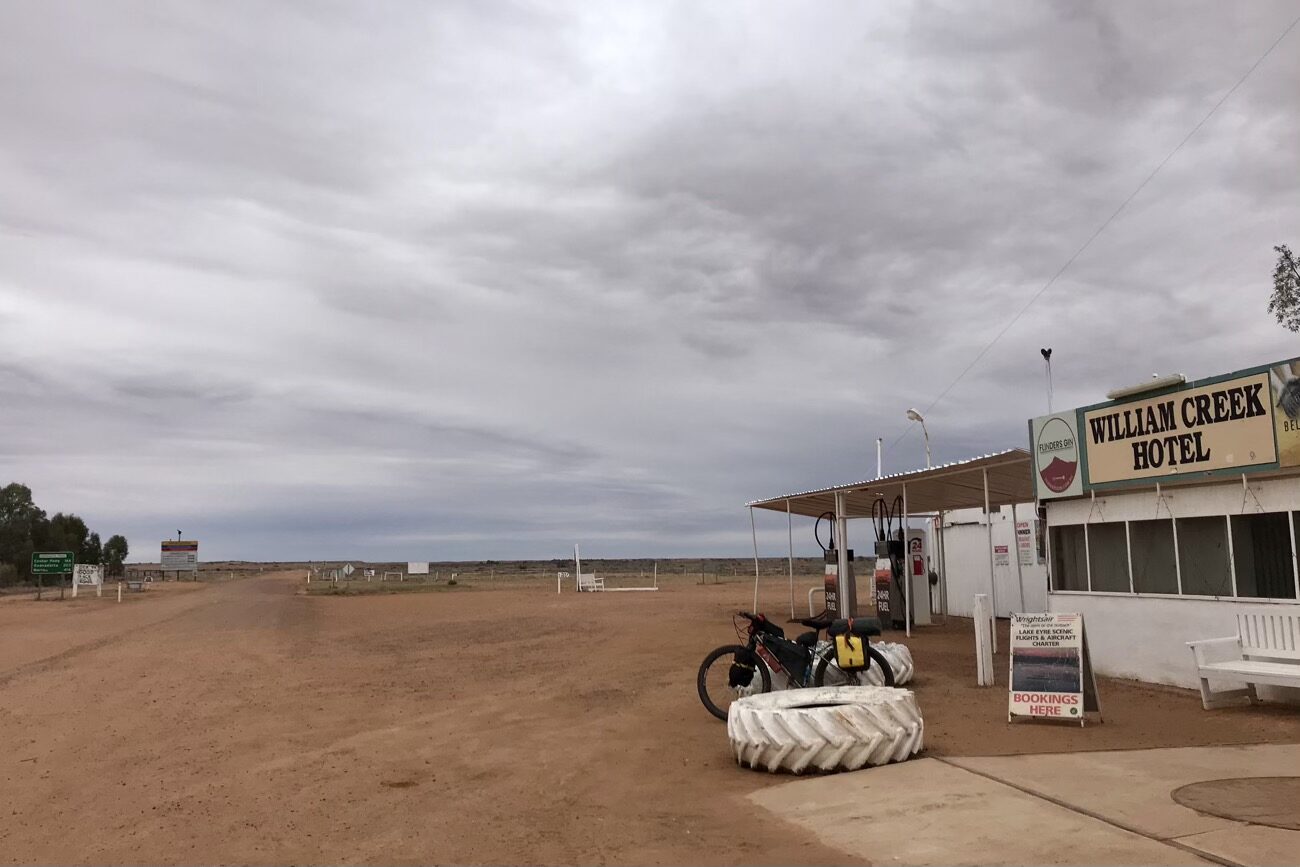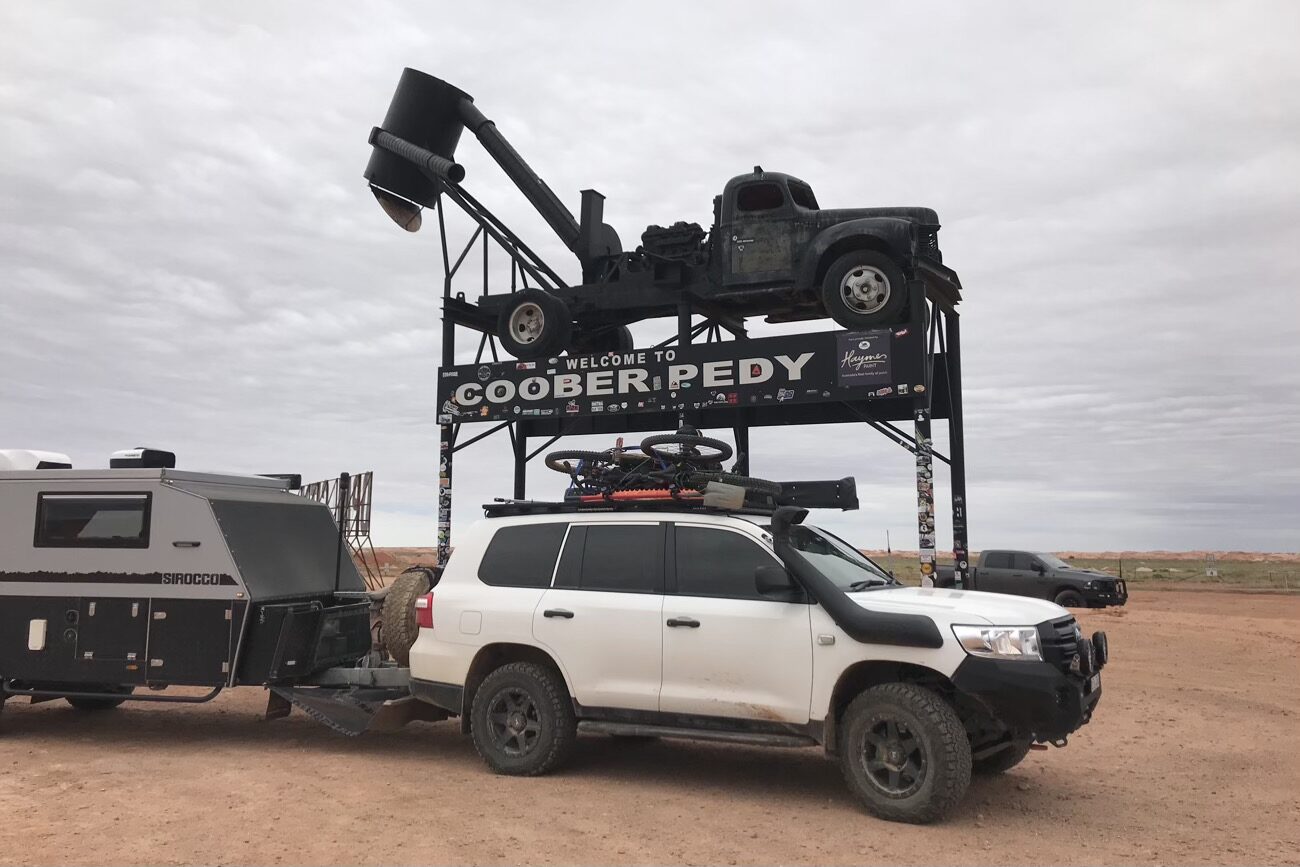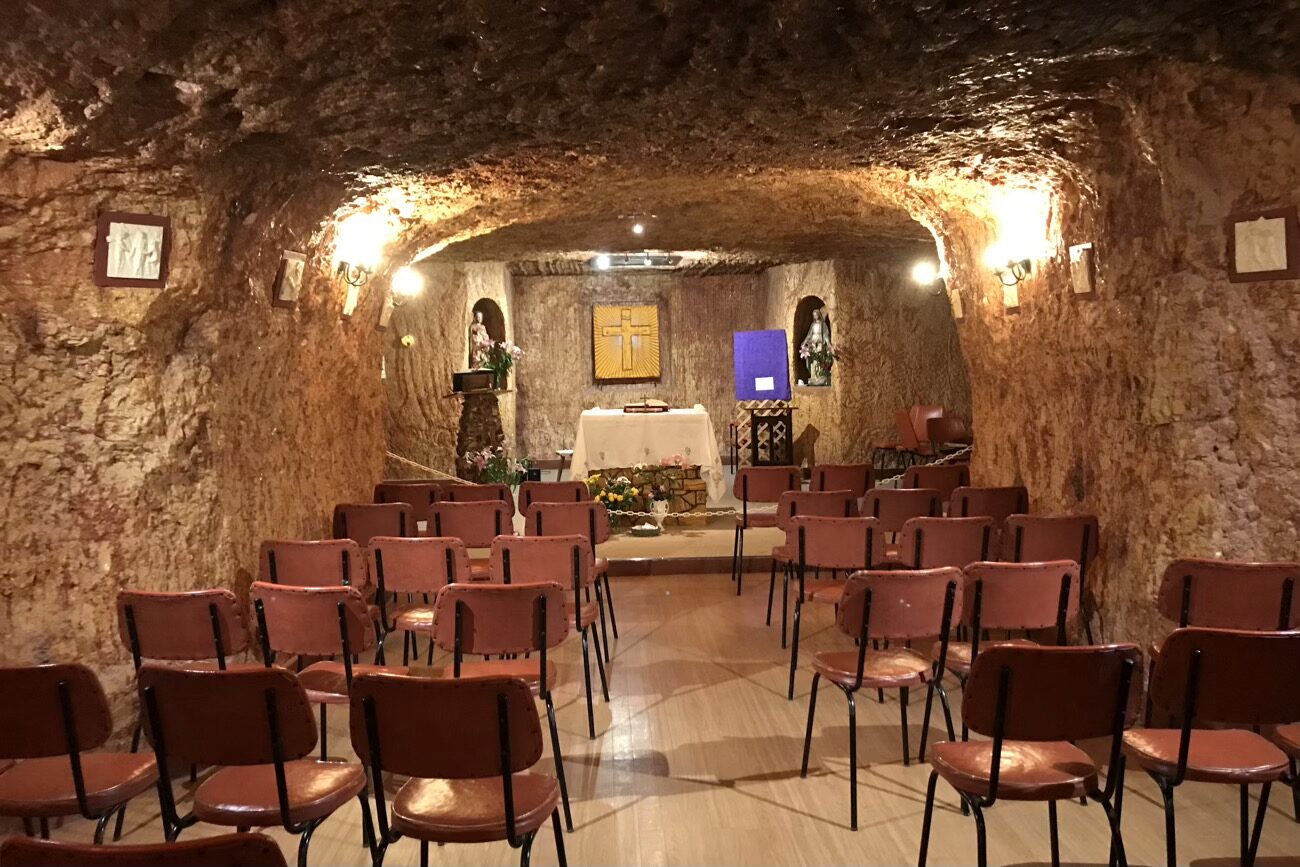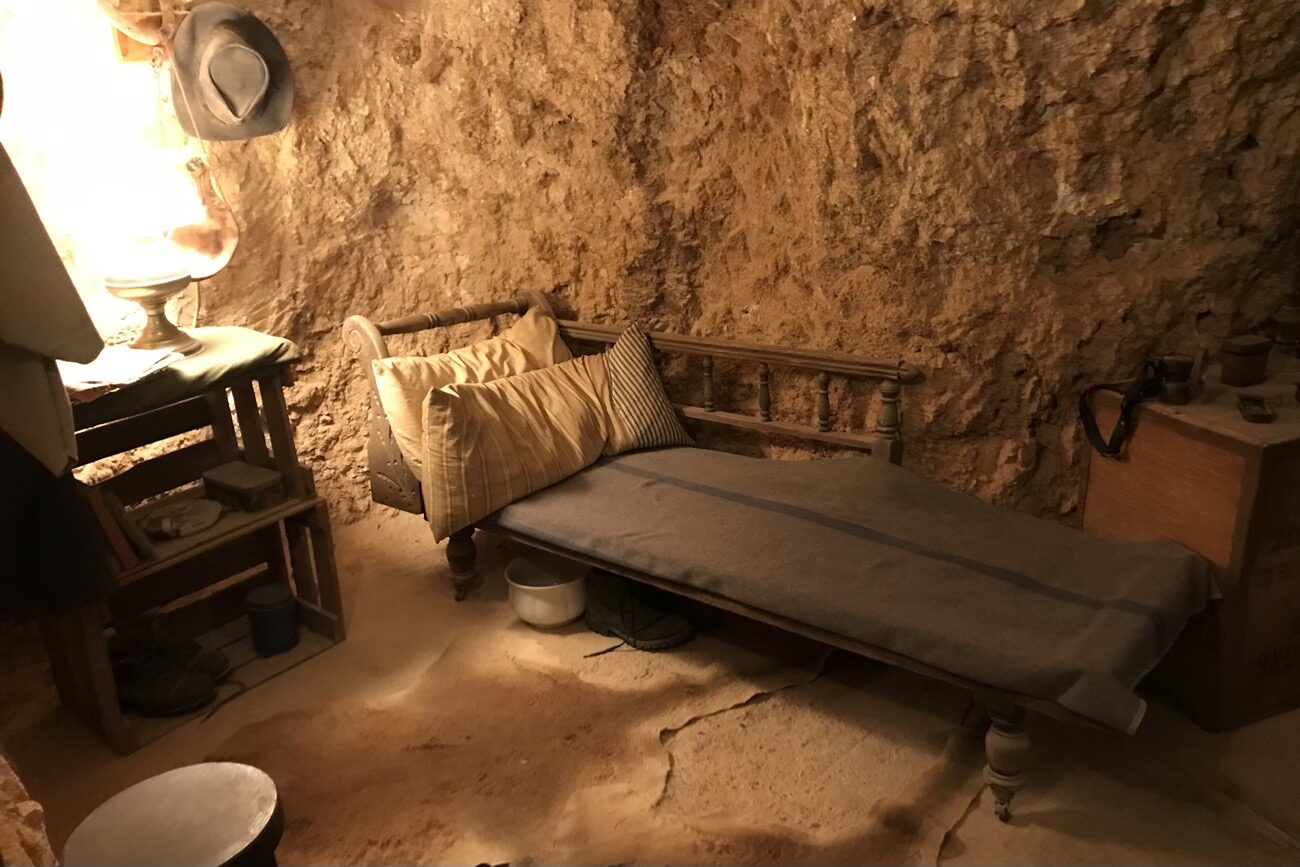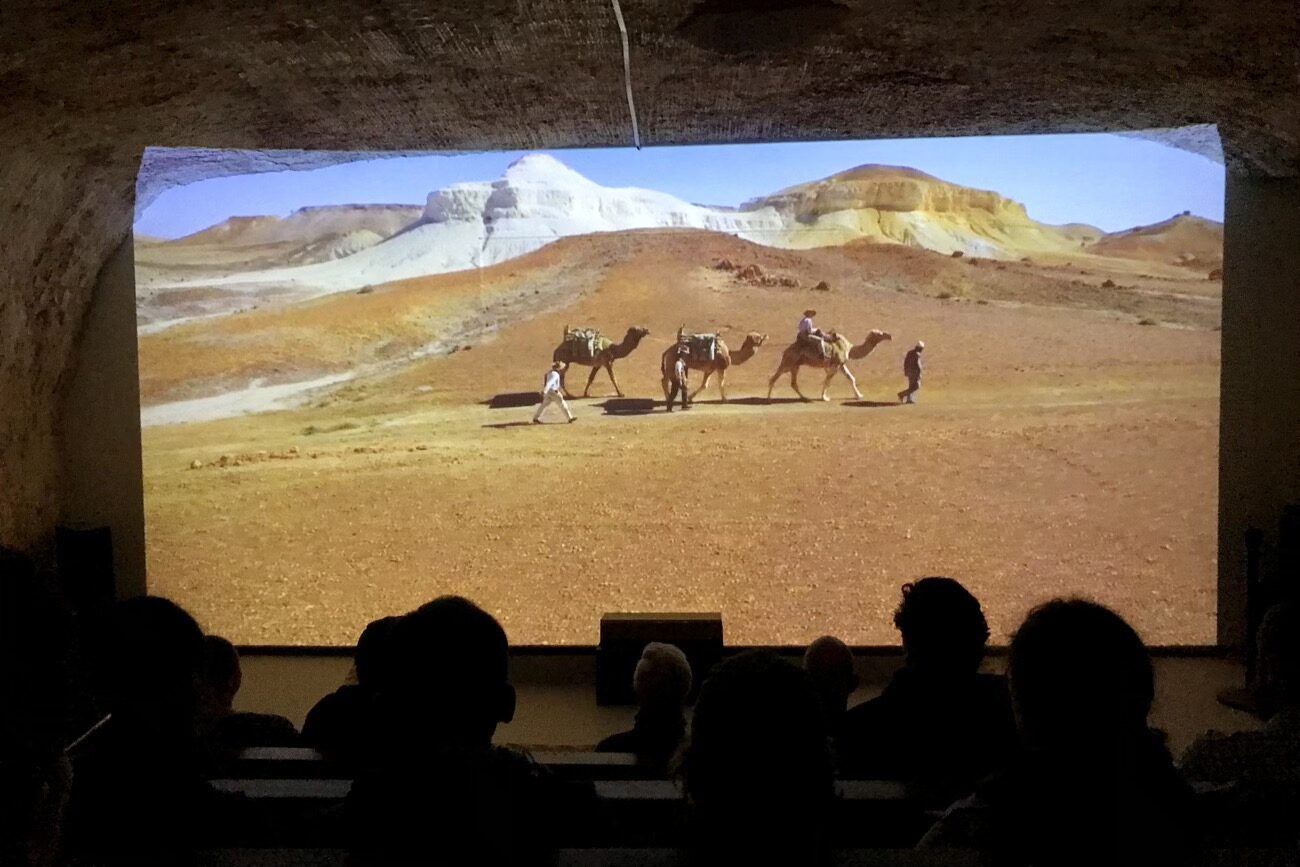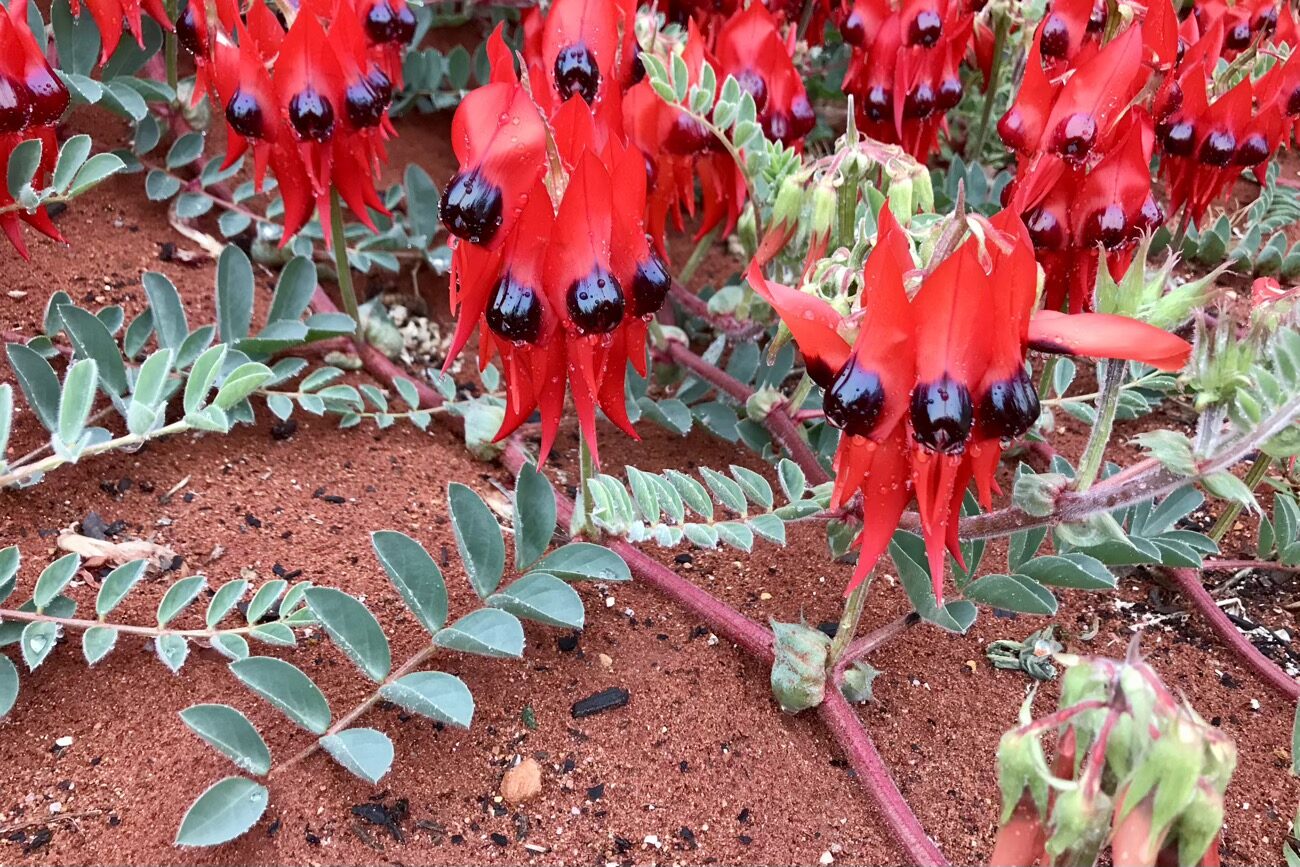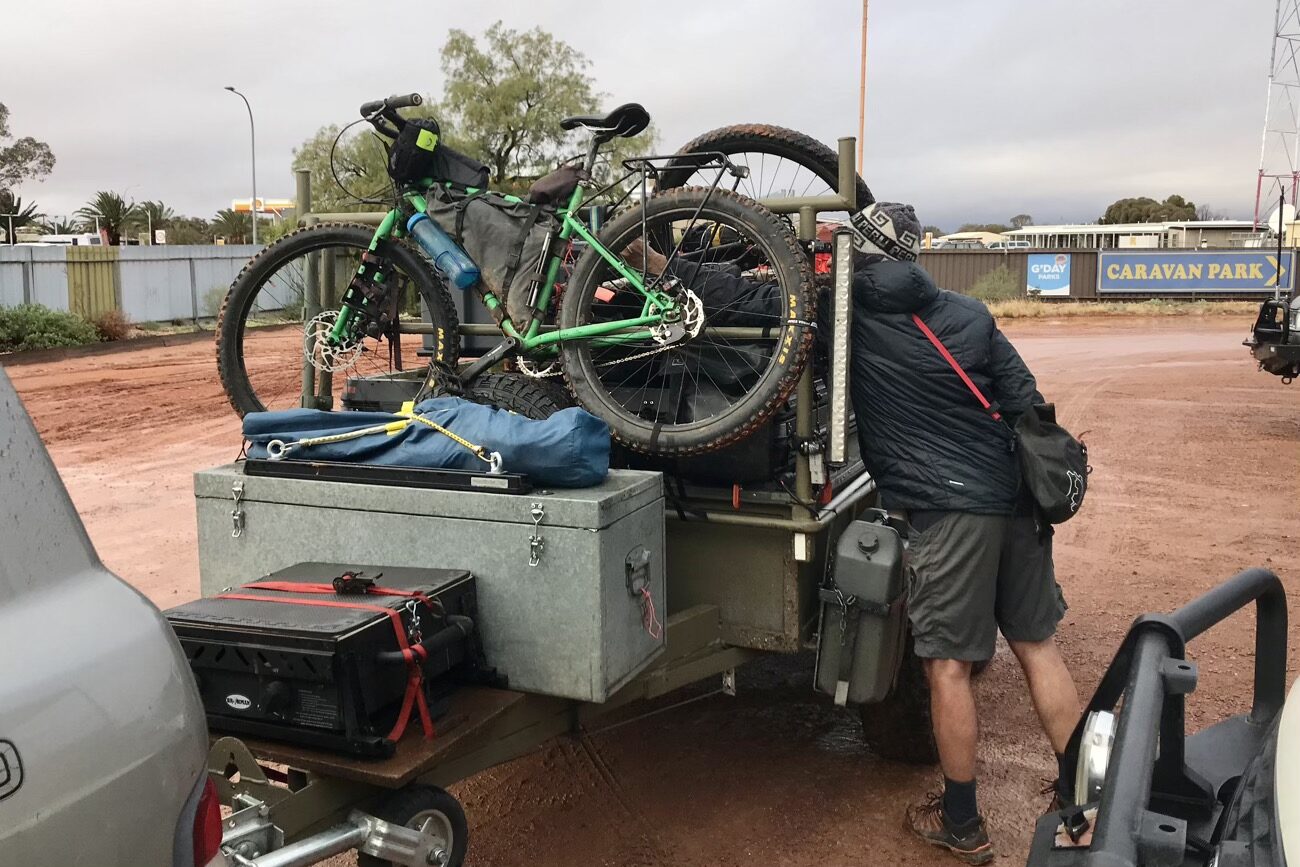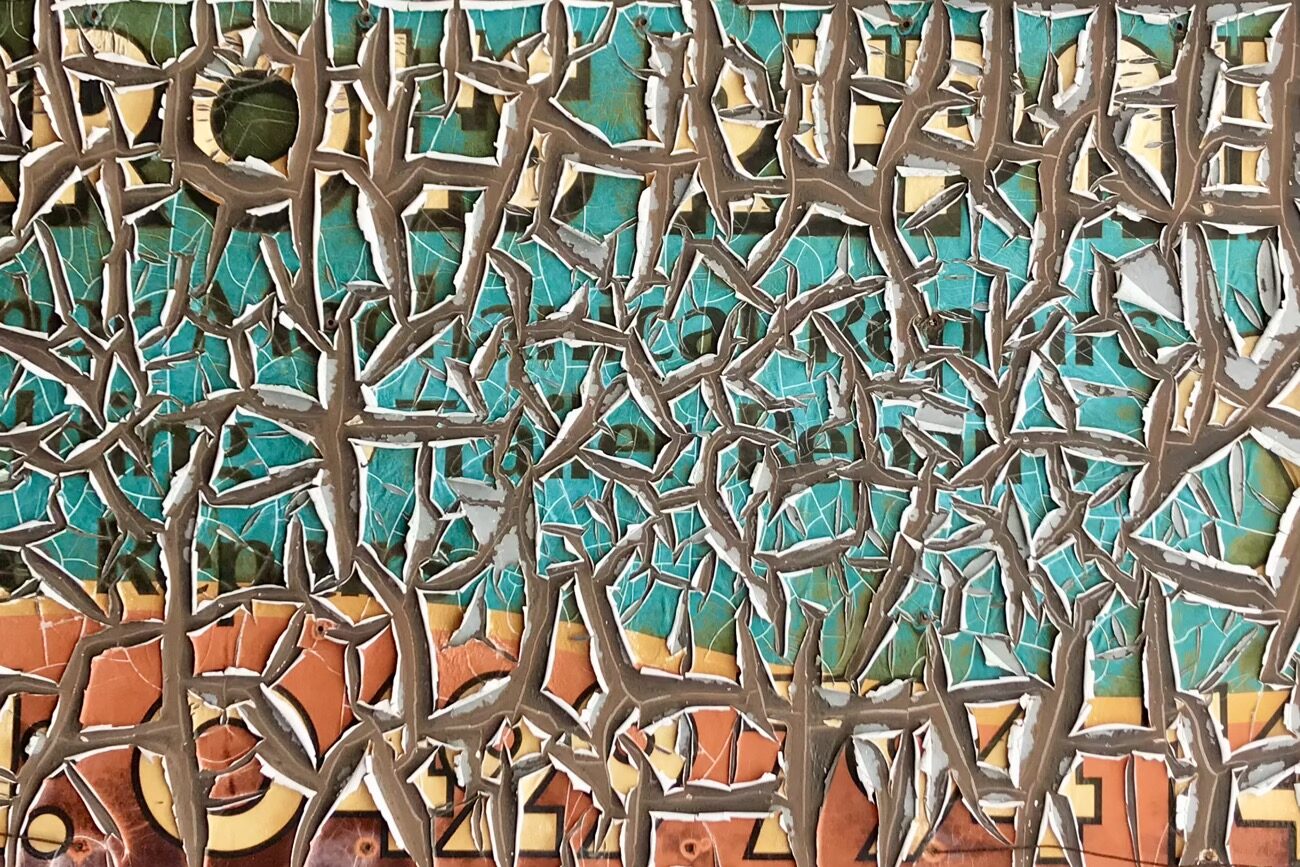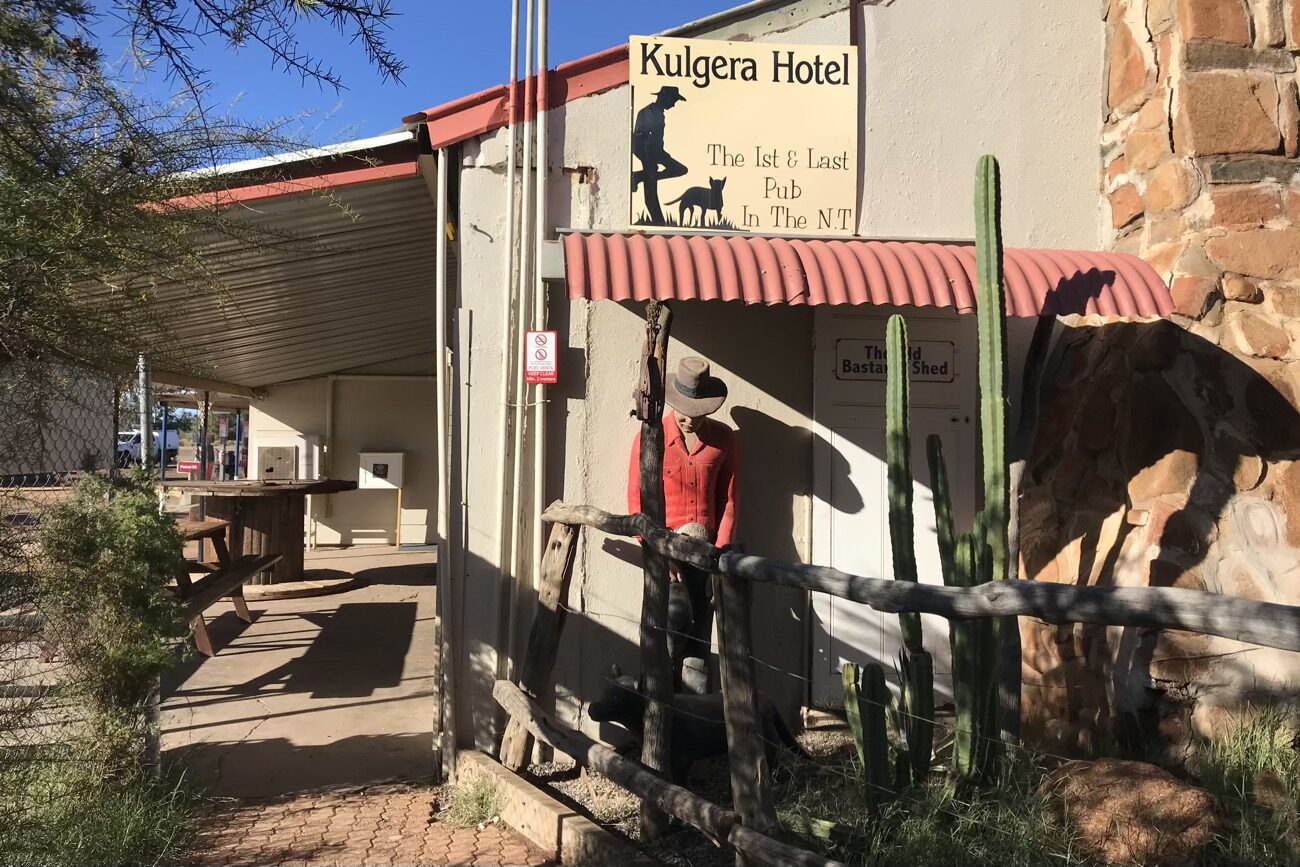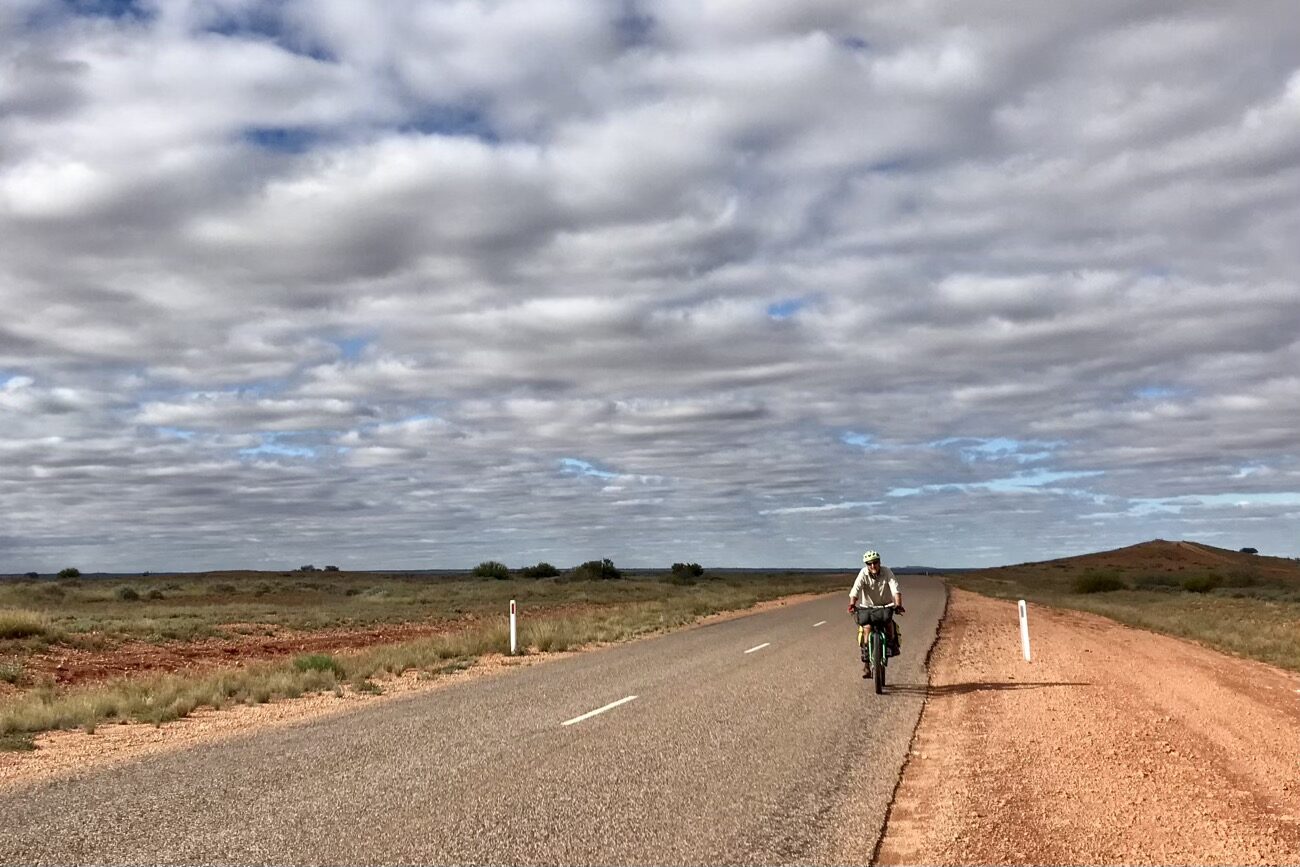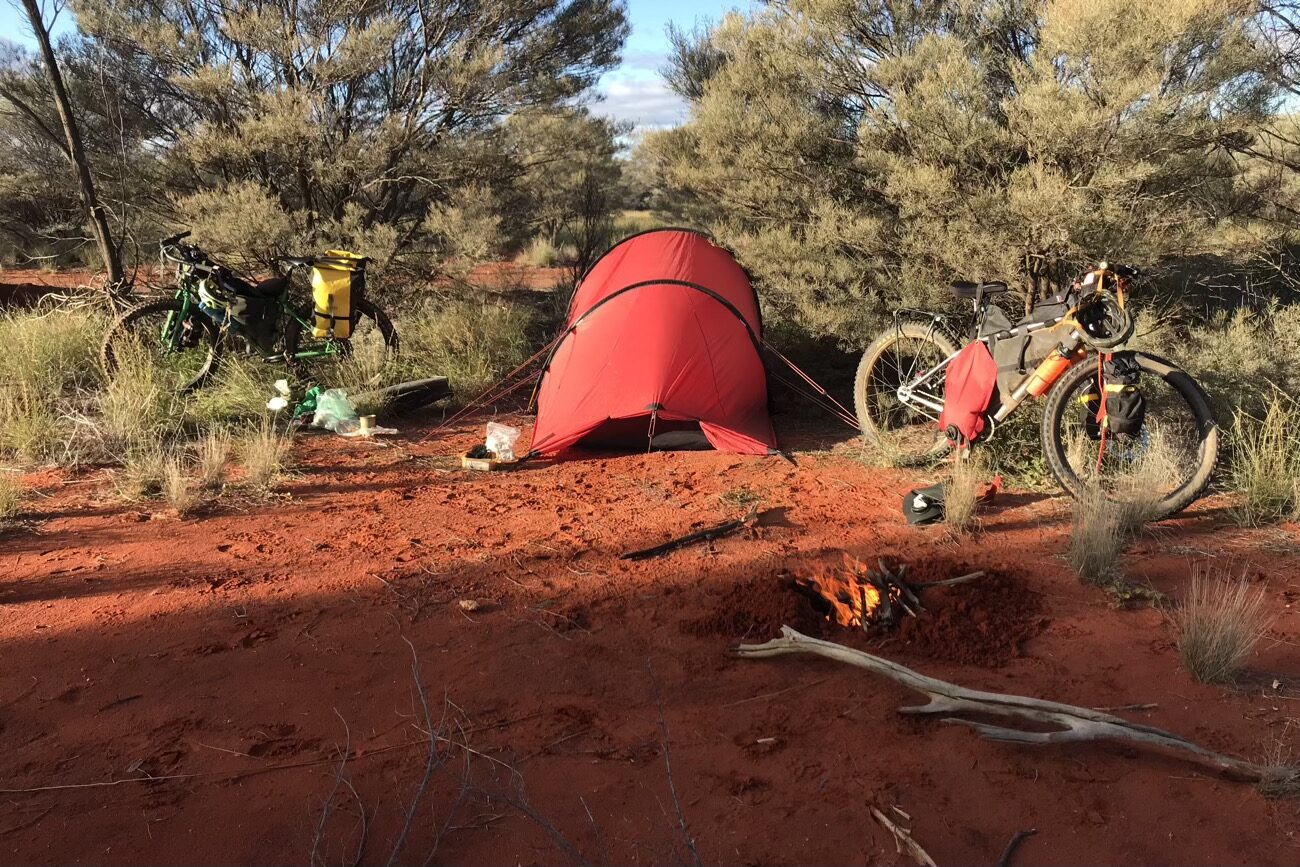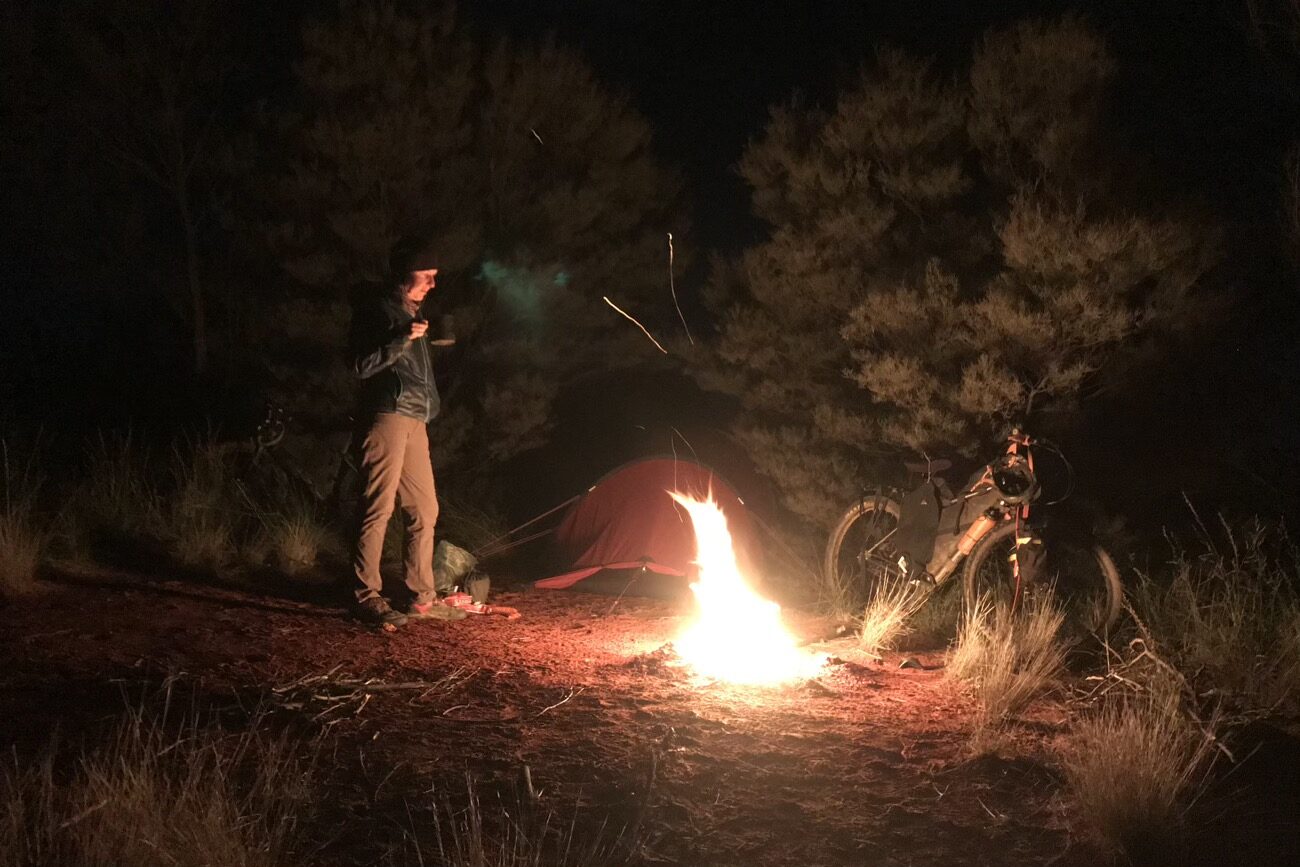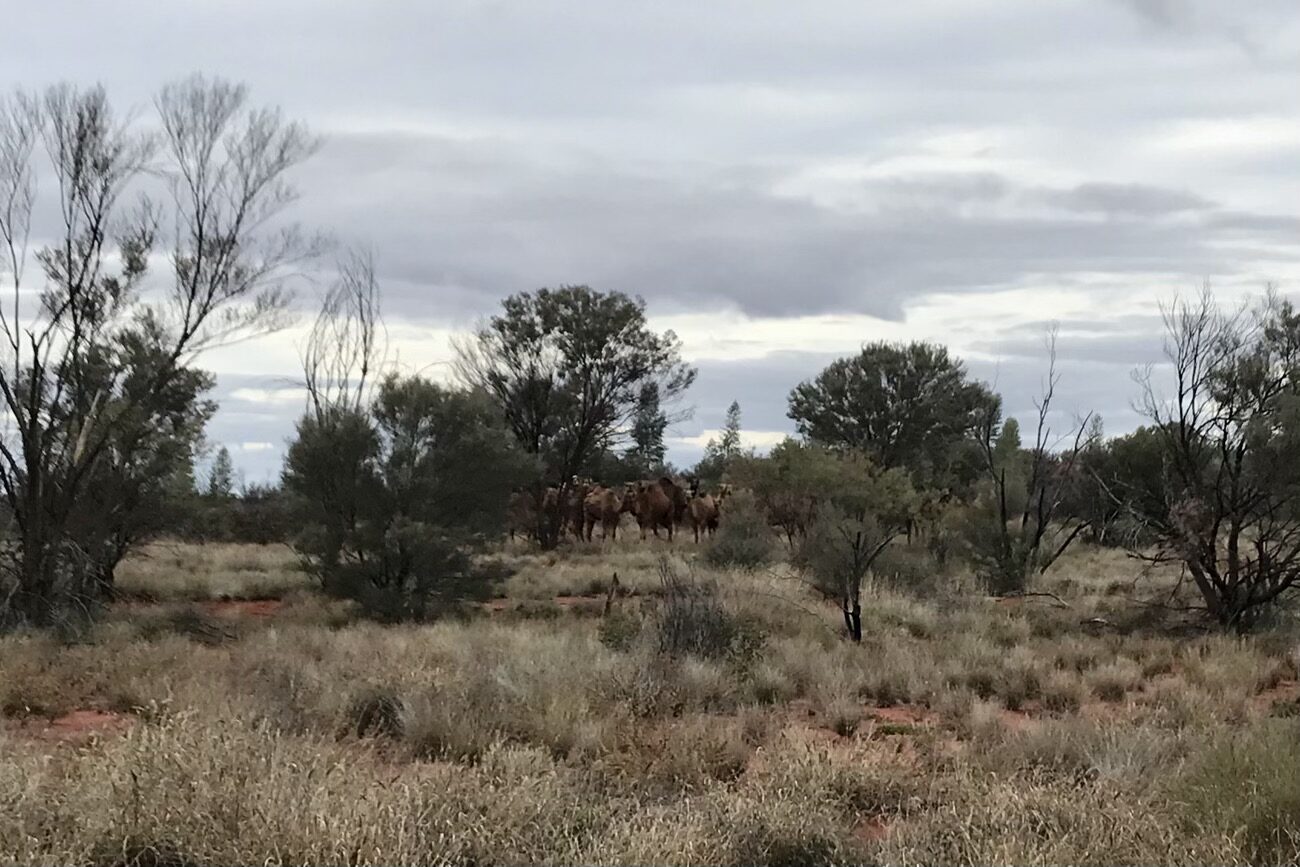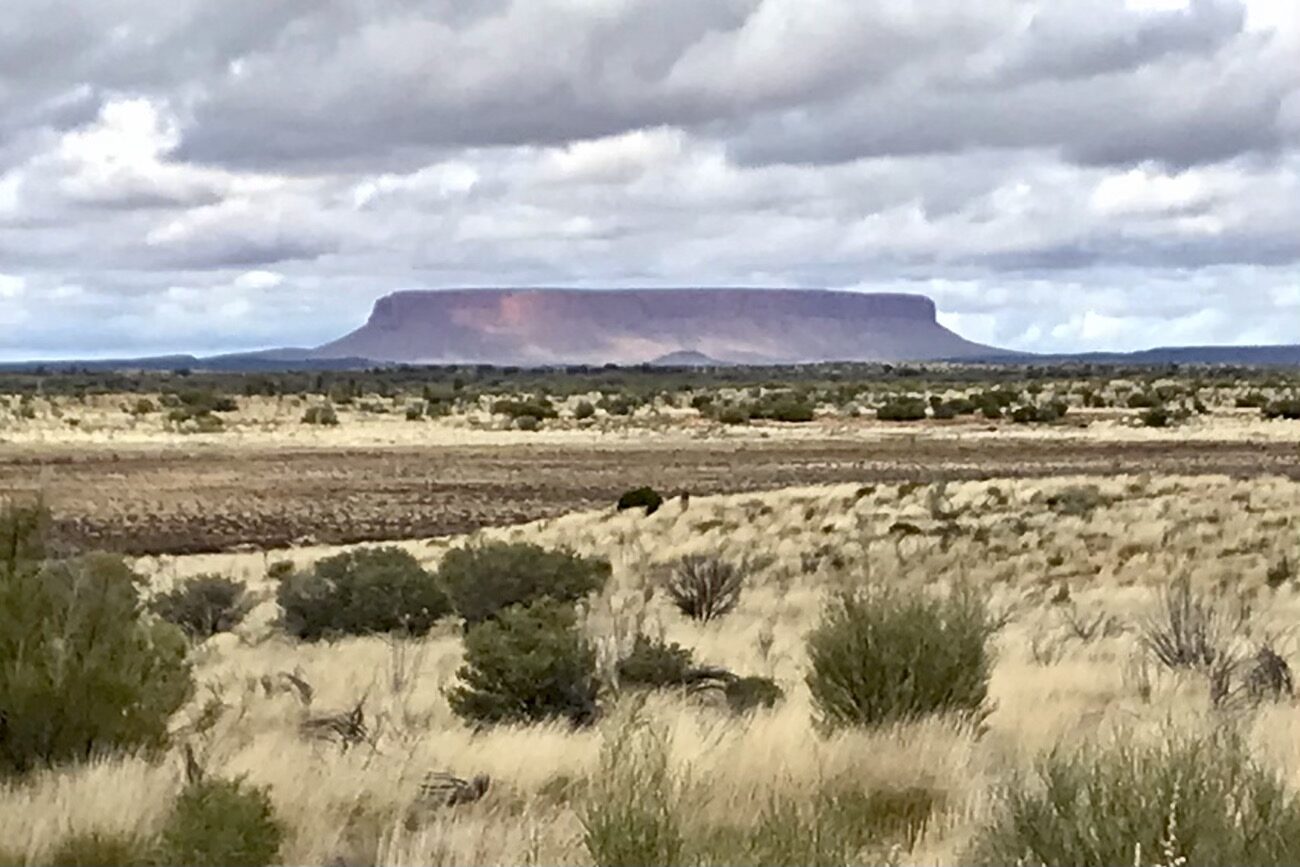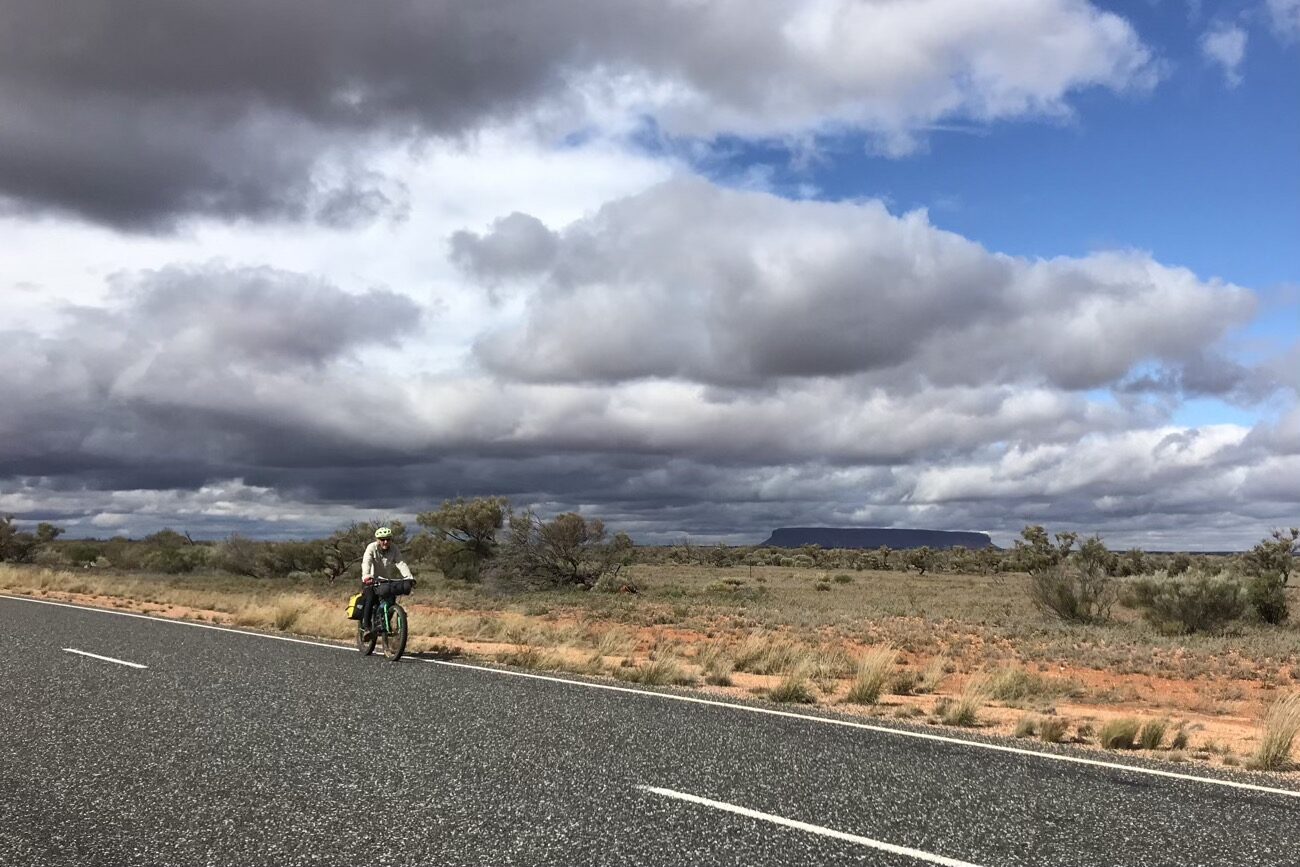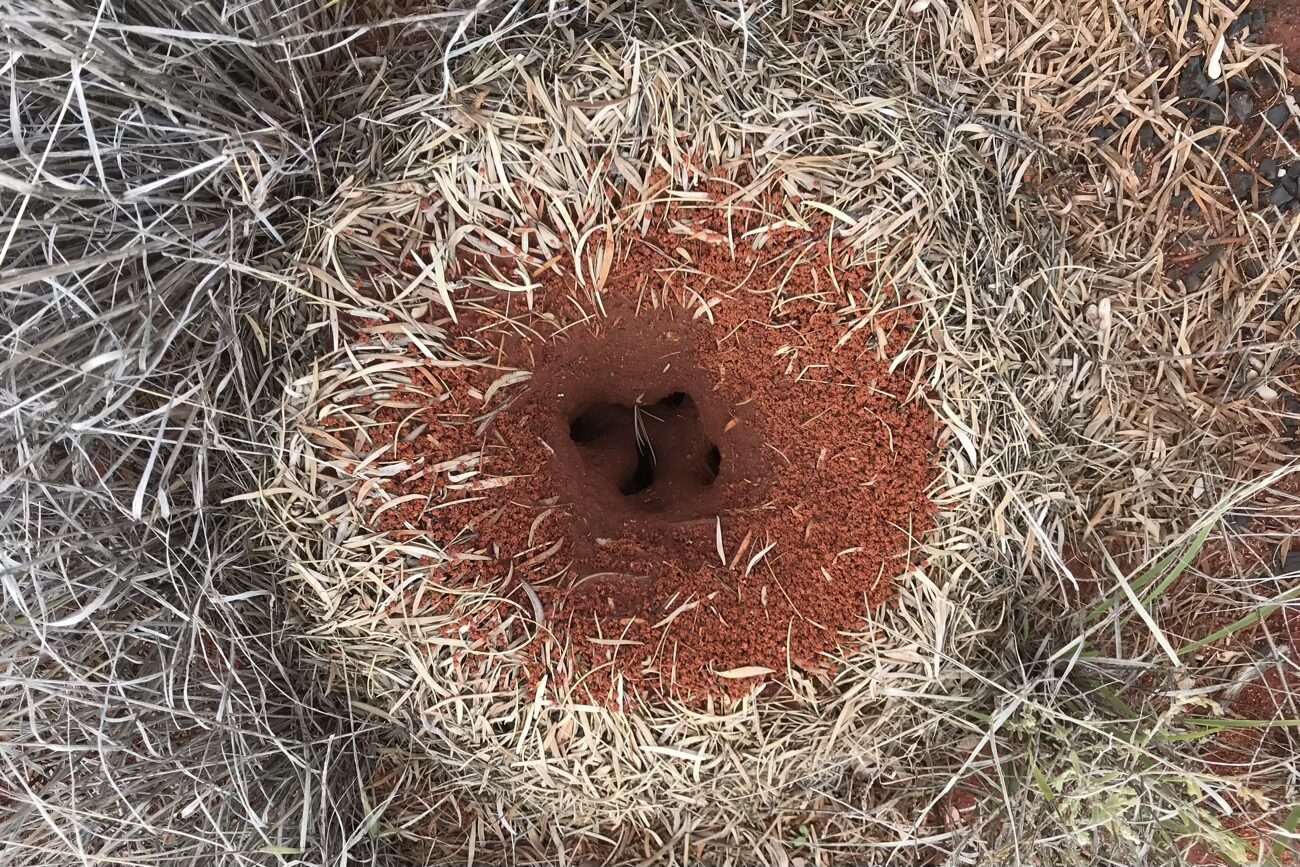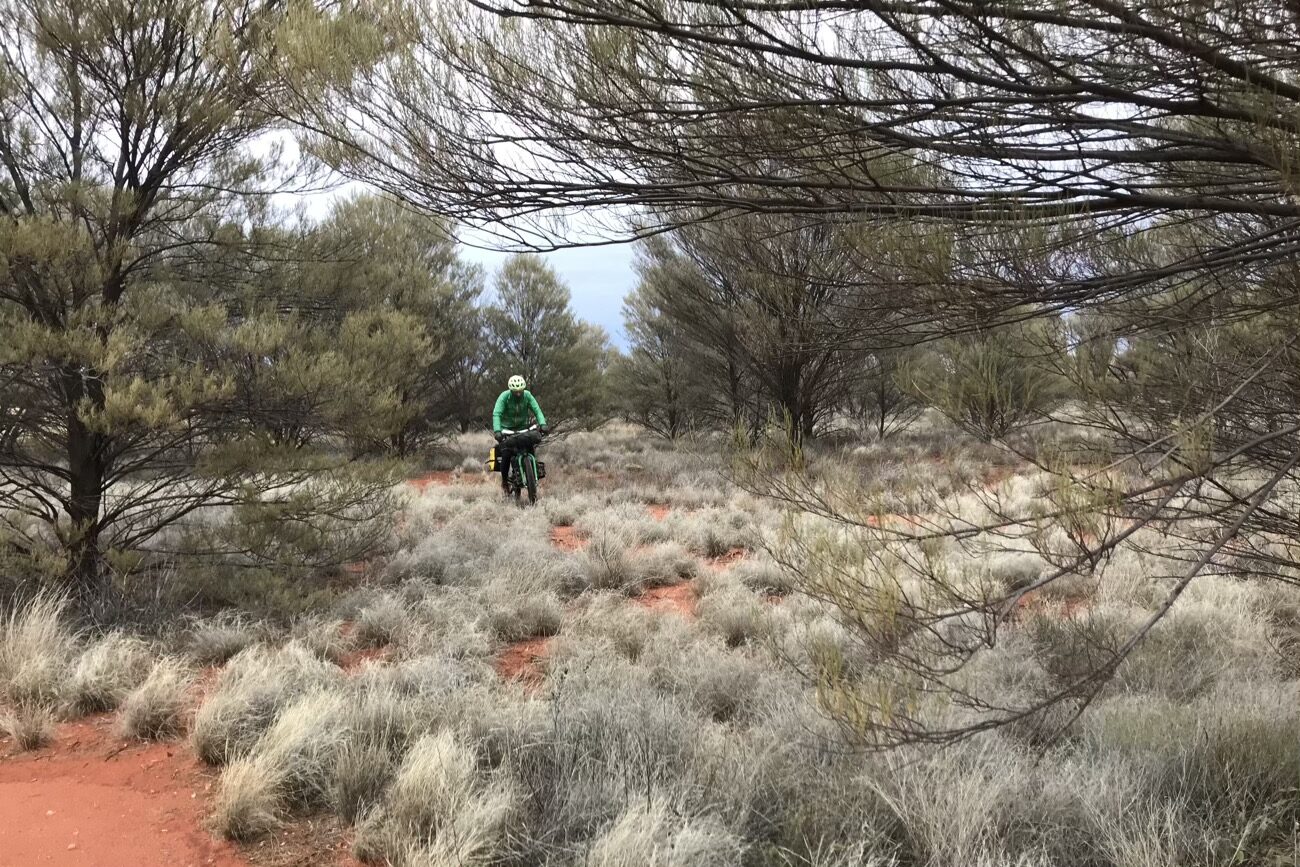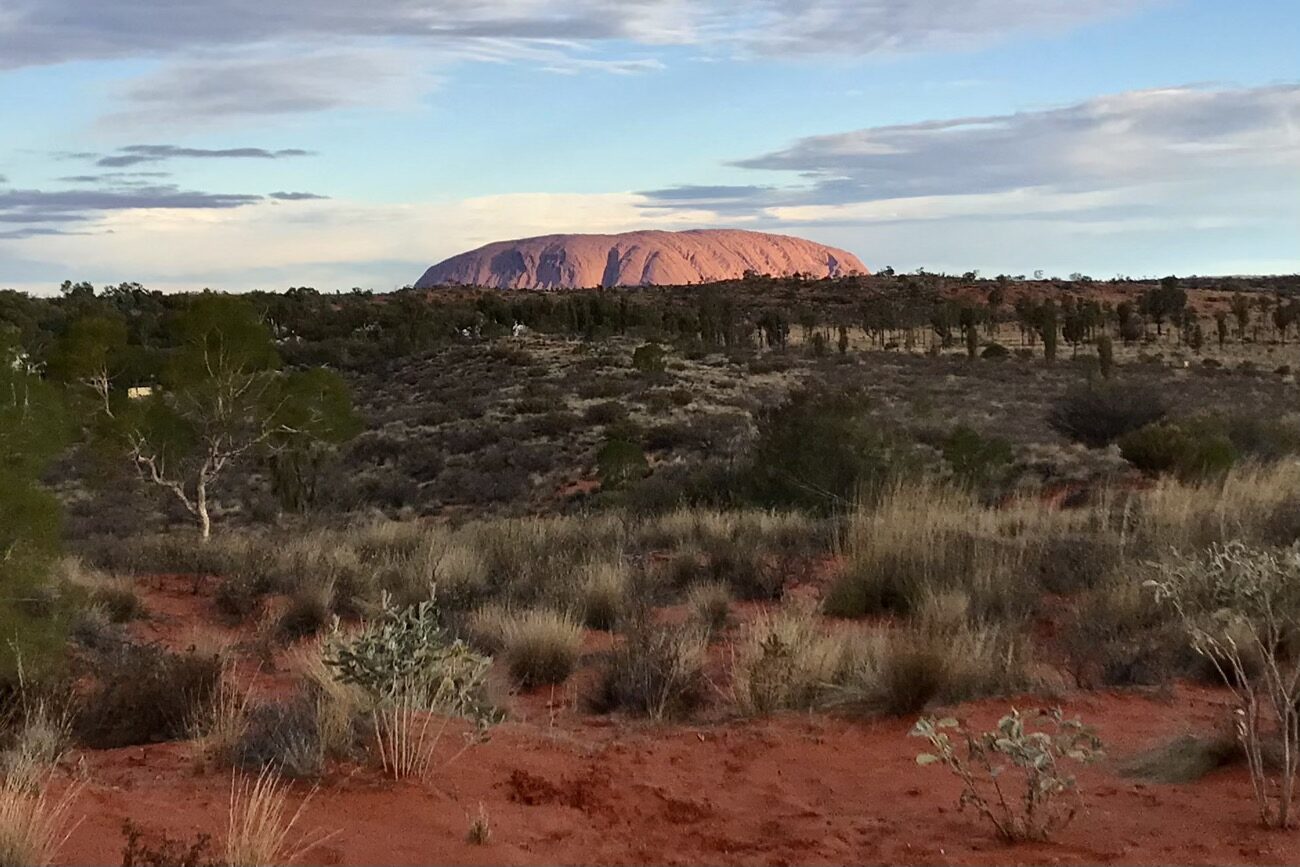We left Marree as the sun was rising and the wind was still sleeping. It was great to be off the bitumin of the previous few days and we were pleasantly surprised at the generally fast and smooth road. We were to learn that the condition of the Oodnadatta road was as good as it gets with recent grading so we were lucky.
Initially I wondered how I was going to cope with the long straights and the lack of visual stimulation that we are are used to in our more normal mountain cycling environment. We found we focussed more on distance and time and scanned the upcoming terrain for features that would tell us we were making progress. We looked for the little things that added variation and enjoyed the cloudscapes.
The route parallels the Old Ghan railway line, a narrow gauge railway that ran north south linking communities, moving minerals and in war time transporting troupes to the northern coast. It has been decommissioned and remnants that we saw are old water tanks and sidlings, abandoned workers houses and old bridges over dry watercourses.
At Plane Henge there are installations of junk sculptures spread over a large area, including 2 Cessnas standing on their tails wingtip to wingtip. The sculpture ‘park’ was a great distraction from the road and the building headwind.
We were pleased to make it close to the shores of South Lake Eyre for a great wild camp for the night. Next morning I checked the altitude on my mapping app and saw that we are riding at 9m below sea level. The normally salt encrusted Lake Eyre contains the lowest point of the Australian continent and on the rare occasions that’ll it fills up it becomes the largest lake in Australia.
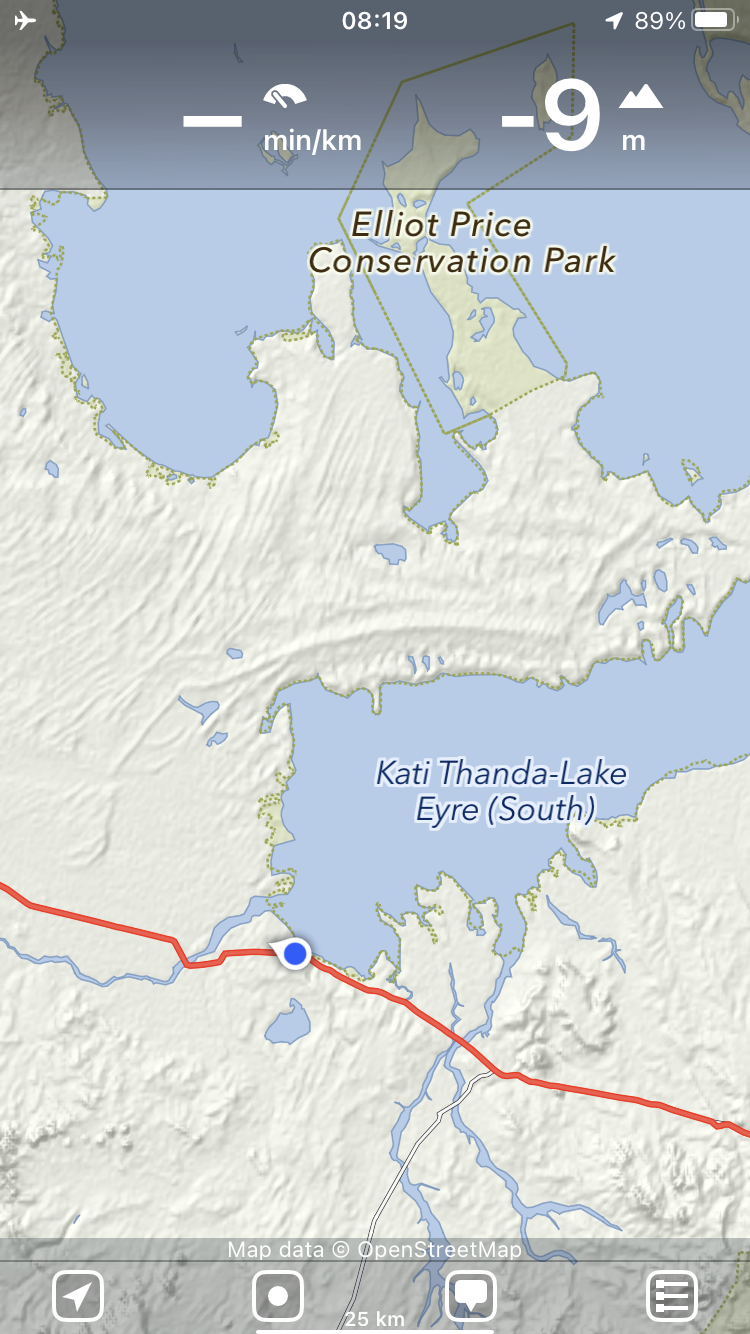
It was 40km to Coward Springs the next morning and by lunchtime it was blowing 40km/hr head on. Coward springs sprung a leak when a bore was drilled causing millions of litres of water to flood the previously arid area and creating a permanent wetland. Historically it serviced the railway but now is a tourist campground and dates are harvested from the small date palm plantation. We enjoyed coffee and date scones and had a refreshing soak in the tepid ‘spa’ pool. We intended cycling on but the wind didn’t abate till 5:30 when it knocked off so we stayed put for the night.
As a consequence of the short day previous we were cycling an hour before sunrise enjoying the changing light and calm conditions and made good time to the William Creek hotel where we were planning to camp.
We had been warned in Marree of the incoming rain, predicted to be a years worth in a couple of days so it was a calculated risk starting out on the Oodnadatta.
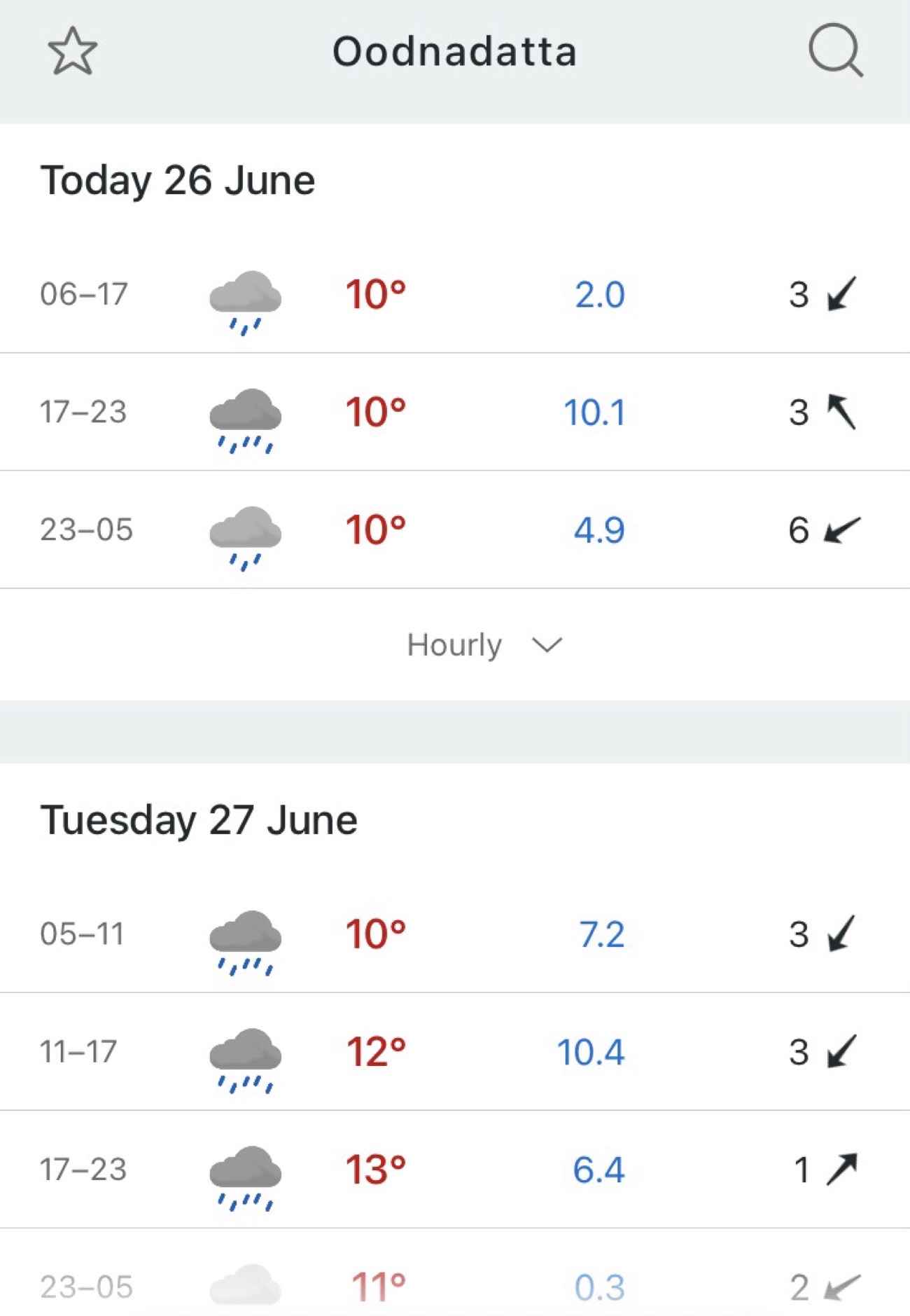
We figured we might cope with sitting it out waiting for roads to dry and reopen but reality hit the next morning when we were all but the last tourists left in William Creek and we quickly decided to try and get a lift west to Coober Pedy which would hold more interest if we had to stay put for a few days. We were lucky with a lift and arriving in Coober Pedy we learnt the road closed behind us and as it turned out William Ck was cut off for 5 or 6 days. Phew!
Coober Pedy is famous for its opal mining and underground lifestyle. Because of the 40-50 degree heat of summer and coolness of winter, sand storms and the lack of building materials the opal miners in the early 1900’s moved into ‘dugouts’ – the recently excavated caves they had searched for opals in and this practice carries on today with 70% of the population living underground. We did a mine tour which included seeing an old and present day underground living – makes a lot of sense. Our accommodation for the 2 nights was mostly underground in an old mine.
Because of closed roads biking options had narrowed. We weren’t keen to ride the Stuart highway because of road trains and grey nomads hauling two bedroom houses so we were able to get a lift with people who recognised us from the campsite at William Ck, to Erdlunda 500km north. From this point we could bike the paved Lassiter highway 260km to Uluru (Ayer’s Rock) – along with the grey nomads still but a lot fewer road trains.
We were biking west blessed with strong easterlies that helped the miles fly by for a pleasant change. The highlights of this 2 and a half day stretch were 2 great wild camps, morning and evening fires, watching and being watched by a herd of wild camel and having a dingo circling camp as we were decamping.
We arrived at Yulara, the ‘resort’ town 15km from Uluṟu early on the third day. The skies remained cloudy till just before sunset when there was a break in the cloud and we were able to see the magic that is Uluṟu from a small high point when we were walking back to to the campground..
